Empowering students to think critically and creatively since 1913
IN THE NEWS
CLASS OFFICE ELECTIONS
Freshmen, sophomores, and juniors will vote for their class officers for the 2024–25 school year on Friday, April 26.
SPRING DANCE CONCERT TIMELESS TWENTIES PROM
SPHS Dance will put on their annual spring concert on Friday, May 17 and Saturday, May 18.
Bright Star musical shines
The annual dance will be held at the Santa Anita Race Track Chandelier Room on Saturday, May 4.
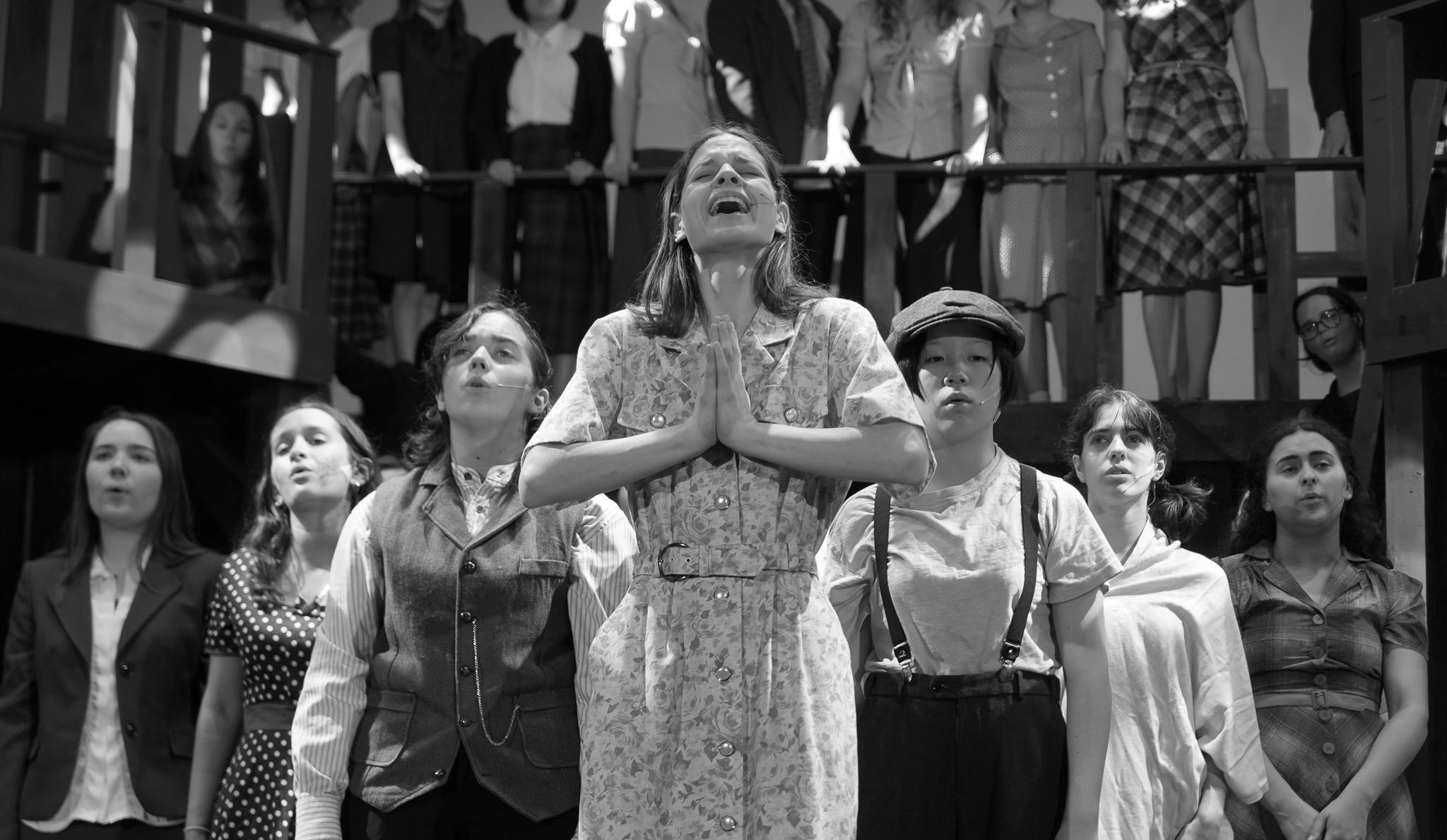
STORY CLAIRE MAO
PHOTO SHIN-HYE (RACHEL) CHOI
SPHS Drama performed their spring musical, Bright Star, for three days. Their three showings in the SPHS auditorium were held on Friday, April 19; Saturday, April 20; and Sunday, April 21.
Bright Star takes place in three North Carolina locations: Asheville, Hayes Creek, and Zebulon. The musical revolves around the themes of love and regret, and includes the journey of finding a lost child.
“I think there’s many themes. But I think the most important one is this idea of regret. And how do we deal with past mistakes? How do we learn to forgive ourselves [and] other people? The story really tells that story in a roundabout way,” director and drama instructor Nick Hoffa said. “I think that’s the best message to take back is…everything is wonderful and I love you. One of the last lyrics [was] let me lift this veil of darkness. If I’m thinking about things that happen that were bad in the past…how do I move past that?”
The play follows two central threads: one set in 1923, and another in 1945. Alice Murphy, the main character of the musical and editor of the prestigious magazine Asheville Southern Journal, begins to reflect on her own past and the circumstances regarding her lost child.
The play was comprised of two acts with a 15 minute intermission. Act I consisted of a total of 16 songs, and Act II presented 10. Kicking off with If You Knew My Story, other songs included Way Back In The Day, Please, Don’t Take Him, and Man’s Gotta Do.
Auditions for Bright Star took place during the first week of January, and the program’s first rehearsal was on February 5, making the practice for Bright Star around 10 weeks. The cast consisted of 36 performers and 10 members of the Bright Star band. The cast included seniors Iris Barrera (Alice Murphy), Solon McDonald (Daryl), Vivian Yu (Lucy), and sophomores Mina Mannal (Margo) and Jarvis Wood (Billy Cane).

CONSUMER CONSENT
Tiger analyzes the clear power imbalance between web users and the advertisement companies in the digital age.
Page 7
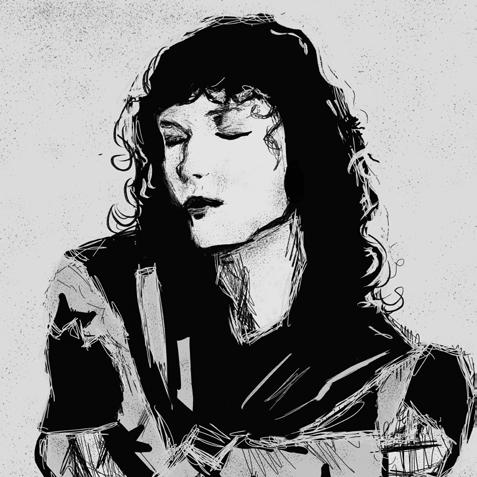
The set included different formations and a backboard with shining stars and colors. Three wooden structures were also present that could be maneuvered and turned to set different scenes.
“That was so fun for me to see tonight, because usually getting the bar in the right position has been some work and they did great tonight…[James] Jontz should get great credit for coming up with the design of the set and having [the set] be something that would [feel] kind of evocative of the time period,” Hoffa said. “It was also flexible enough for us to have it live in two different time periods and position them around so we could tell different stories.”
The drama program chose the play, which was written by Steve Martin, to present lesser known works to a larger audience. Hoffa hopes the audience will continue to open their minds to watching creative works and spreading comedy in general.
“I really like thinking about this play and the story and the characters, because so many characters have what we call an arc…This show has a lot of them: [there’s] Alice and there’s young Alice, there’s Billy and there’s Jimmy Ray,” Hoffa said. “And then there’s Margo and even some other characters. The fathers go through arcs, the Mama Kane, Papa Kane, and there’s all these arcs that happen…I think it makes for a really fascinating, interesting story.”
Bringing works to communities to enjoy and learn from has been a goal of Hoffa. He is very proud of how committed the cast was to the story and the final product of Bright Star.
“My favorite part is the finale. We revisit lots of different parts of the show. Everyone’s kind of looking around and that’s from this song, or that’s from this song,” Hoffa said.
“Usually a show just wraps up with the big opening numbers so to have a final song that is so moving while we’re sort of seeing elements of the show, as a director, it’s incredibly gratifying to kind of revisit the whole beautiful thing I just saw, and a tiny little three minutes on.”
FOUND HEAVEN REVIEW
Singer Conan Gray’s newest album Found Heaven was released earlier this month to great acclaim and excitement with a new synth sound.
Page 11

The Tigers suffered a 9-2 loss last Friday, but the team’s energetic atmosphere and strong connection never lost its spark.
16
SOFTBALL VS LA CAÑADA
Page
VOLUME 110 ISSUE 7 APRIL 26, 2024
SOUTH PASADENA HIGH SCHOOL 1401 FREMONT AVE, SOUTH PASADENA, CA 91030
TIGERNEWSPAPER.COM
STORY CLAIRE MAO PHOTO CONTRIBUTOR
Eleven SPHS students showcased artwork in the Autry Museum of the American West in Griffith Park on April 20. Participants submitted 2D art such as drawings, paintings, and photography.
The 11 featured student artists are seniors Brandon Park, Heejoon Lee, Lorenzo Guerra, Elaine Zhang, Mason Niu, Maya Young, Sangyoun Lee, junior Taidi Yue, sophomores Diana Lopez, and Emiko Essmiller. The event, hosted by the Autry Museum, occurs once a year to promote student art and young artists.
“It’s very significant for our students because just showing your work in a gallery setting is a big deal. But showing in a museum, it’s even a big deal,” SPHS photography teacher Rouzanna Berberian said. “So going and meeting other artists, other students, making collaborations, making friends from other schools, seeing other people’s work, and being inspired gives them a head start in their artistic journey.”
SPHS first entered submissions to the Autry Museum three years ago during the pandemic. Since then, Berberian has encouraged students to submit and participate. SPHS art teacher Aimee Levie-Hultman submitted student works for the first time this year.
“The reason I’m doing it is because Ms. Berberian participated last year and she found a lot of success
Students submit to Autry Museum
11 SPHS students will have their artwork displayed in the Autry Museum of the American West from April 20 to June 27.
and it was her students. She encouraged me to do it,” Levie-Hultman said.
Showings of students’ artworks will last until June 27. “Not everyday you get museum shows and they feel it adds value to their work, it gives validation of their hard work,” Berberian said. “[It] gives them hope, gives them validation, gives them courage to go and continue to mourn and experiment with their way.”
“I really want [students] to participate…it gives them this courage to go and continue more, get validated with their work, and keep continuing growing their art and not being afraid to participate,” Berberian said. “A lot of times students say, ‘Oh, I’m not going to do it because I’m not going to.’ My simple answer is that ‘you’re not psychic…you don’t know’ and then I encourage them to do it. Sometimes I really push them hard to participate. But then once they pass that stage, the end product is this great exhibition.”

SPHS SkillsUSA qualifies for nationals
STORY ABIGAIL KIM PHOTO ZOE
CHEN
Four students from SPHS’s chapter of SkillsUSA qualified for the national competition at the state convention. One team, composed of freshman Georgia Calvert, junior Ryan Wong, and senior President Kevin Pietrzik, advanced in the Outstanding Chapter event — where participants are required to write and present a report detailing the activities the club has done over the year. Junior Chaslyn Bradford qualified for the facilithon competition.
SPHS’s SkillsUSA club provides students with experience as they compete in workplace skills competitions, which
range from advertising, design, and public speaking. Participants can choose from over 100 competitions to be involved in, and they dedicate the first half of the year to preparing for competitions by writing resumes and sharpening their skills. SkillsUSA additionally conducts fundraisers where students are presented with the opportunity to be able to raise money for state dues.
Membership dwindled after the pandemic, but has risen back up since then. The club meets every Friday in Sandra Matson-Fennell’s classroom. Matson-Fennell serves as the club’s advisor, and club officers include seniors Sophie Mertzel and Kevin Pietrzik, junior Ryan Wong, and freshmen Georgia Calvert, Bianca Lao, and Chloe Moon.

SPHS hosts annual career fair
STORY ZOE CHEN
SPHS held its annual career fair from Tuesday, April 16 to Thursday, April 18. The fair is a three-day event with the aim of exposing students to career pathways with inside information from representatives from each industry.
Tents and tables were set up each day outside of the counseling center, and hanging signs labeled each table by profession. All career representatives were SPHS parents or staff, and the representatives changed daily.
Almost a dozen career groupings were present, and they were of a wide array — booths varied from
communication and business to entertainment and education. Multiple representatives sat behind each booth, willing and ready to tell prospective students about what they do for a living.
“I hope students can take away a better understanding of what it takes to get into these careers, and that they know that it’s all within reach,” Heather Platt, an independent journalist, said. “This event is something I do to help students today, because I wish I had had something like this to propel my interest, but I didn’t.”
Booths were grouped roughly with STEM careers in one section and humanities in another. Lines to each booth formed quickly into lunch. Many tables drew students in with bowls of candy or small prizes; some booths were more popular than others, but none were neglected completely.
On Wednesday, the Marines in particular experienced crowds of students around their pull-up bar all throughout lunch.
SkillsUSA saw a record 33 students who, after qualifying through regional events, attended the state competition this year. Students traveled to Ontario, California for the four day competition. While many individuals and teams placed at state, only the gold medal recipients — Calvert, Bradford, Wong, and Pietrzik — advanced to nationals.
Mertzel received silver for T-shirt design, a competition involving creating a shirt that represents SkillsUSA and then presenting the design process. Seniors Miriam Dever, Geeyou Lee, Nicole Sawano, and Justine Zee collaborated to secure bronze in the Health Knowledge Bowl. The Health Knowledge Bowl tests students on their general knowledge of the healthcare system. Junior Pragya Sharma also earned bronze, for the Nurse Assisting competition.
Juniors Peter Xie, Ethan Kang, and Alay Shah created a project in Business Management and Technology. This is part of SkillsUSA’s “career pathways” group, which emphasizes careers in various fields — in this case, Business Management and Administration, Finance, Information Technology, and Marketing.
Multiple SkillsUSA students were honored with the Statesmen Award. This award recognises proficiency in demonstrating regarding knowledge of the SkillsUSA organization and framework. The recipients include Moon and Lao, and sophomores Isabelle Mullican and Abbey Montgomery.
“I was confident in not just my team, but everyone else there. We had a lot to prove coming down from a big loss at last year’s conference, so we did a lot of work,” Pietrzik said. “We [did] a lot of preparation before the conference, but going into it — not just my team, but everyone — was prepared [and] ready for it.”
The national convention will be held from Monday, June 24 to Friday, June 28 at the Georgia World Congress Center in Atlanta, and the advancing team looks forward to preparing for the event.
“I experienced a lot of different careers,” freshman Cadence Ni said. “It’s given me a lot of ideas and inspired me to look for opportunities. I didn’t know before that there were so many career options.”
The event included representatives of broad professions, such as teaching and engineering, along with more specialized occupations, like toddler care and medical physics.
“I really want [students] to explore different majors and different subjects, so they can really open their minds when they select classes,” Jing Cui, who works in medical physics and healthcare said. “I hope they can really learn various diverse subjects and…find their calling when they go to pursue a career after college.”
Crowds were largest on Tuesday and had dwindled down by Thursday. Still, students lingered long after the passing period bell had rung each day, and the SPHS counselors look forward to hosting next year’s career fair.
NEWS 2
TIGER APRIL 26, 2024
PAGE DESIGN SOPHIE MERTZEL
GOLD MEDALISTS Georgia Calvert, Chaslyn Bradford, Kevin Pietrzik, and Ryan Wong advance to Nationals to take place in June.


TIGER APRIL 26, 2024 PAGE DESIGN SOPHIE MERTZEL 3 NEWS
Passover at SPHS
Passover, the Jewish holiday that commemorates the Israelites liberation from Egypt in biblical times, is celebrated through different traditions. At SPHS, the Jewish Mitzvah Club held a meeting on Wednesday, April 24 about the history, the act of fasting, and the seder.
Passover, called Pesach in Hebrew, is the Jewish holiday commemorating the Hebrews’ escape from Egyptian slavery. The eight-day holiday is celebrated during the Hebrew month of Nissan, the first month of Spring, and has been observed since at least 5 BCE.
The Hebrew calendar follows the lunar standard, meaning that the dates vary annually for the Gregorian calendar, but the holiday usually takes place during April. This year, Passover runs from Monday, April 22 to Tuesday, April 30. Passover begins on the 15th day of Nissan, and ends on the 22nd every year.
The story of Passover is found in the Tanakh, which is
&SONYASHIMPOCK
of Passover, and chapters 12 through 15 specifically detail certain customs and traditions.
The biblical story of Passover follows Moses. As an infant, he was sent down the Nile river by his mother after the pharaoh decreed that all Hebrew boys must be killed at birth. The Hebrews were enslaved in Egypt, and she wanted a better life for her son. Moses was found by the pharaoh’s daughter at the end of the river, and was raised as Egyptian royalty. No one, not even Moses, knew that he
Passover is one of the most significant festivals in the Jewish calendar.
Central to the celebration is the Seder, a traditional meal that takes place after nightfall on the first and second nights of Passover. The holiday also includes a fasting of leavened bread.
“Passover is one of my favorite holidays because it almost entirely revolves around a very specifically ordered meal. In fact, Seder means ‘order,’” senior Ada Bild said. “I love the routine of each step, and throughout everyone takes turns reading stories from the Haggadah, a book that directs the meal. Every year I look forward to making matzah, charoset, and horseradish sandwiches — I promise they’re phenomenal.”
Participants alternate reading from the Haggadah, a book that directs the meal through the telling of the story of Passover, during Seder. It involves passages of readings, songs, prayers, and designated orders to eat and drink the ceremonial foods.
This includes the Seder plate, three pieces of layered Matzah, with the middle broken in the ceremony, and four symbolic cups of wine. An extra kiddush cup of wine is also set out for the prophet Elijah, whose spirit is said to visit on Passover.
Celebrations History
was Jewish. As an adult, he killed an Egyptian man after Moses witnessed him beating a Hebrew slave. Out of fear, Moses fled Egypt and became a shepherd. One day, after receiving a command from God, Moses returned to Egypt and demanded the freedom of the Hebrew people from the pharaoh. The pharaoh refused, and God subsequently unleashed a plague over all of Egypt. Moses returned nine more times to request the freedom of the Hebrews, but he was refused each time until the final plague killed the firstborn son of each Egyptian household. Afterwards, the pharaoh granted freedom to the Hebrews. According to the Torah, God parted the Red Sea, creating an escape route for the Hebrews.
Passover is also known as the “Feast of Unleavened Bread.” During the eight days of the celebration, bread that has been raised for more than 18 minutes or contains yeast is forbidden. Matzah, an unleavened cracker, serves as a substitute for the holiday and has become a staple of Jewish culture.
“They are really pretty to listen to even if you don’t understand the Hebrew,” Bild said. “Seders can often be extremely long given how many steps there can be, so when I was little, my friends and I would compete in eating horseradish cubes, trying not to tear up at the spice, to pass some of the time. However, the length of the meal can work in your favor as it only ends once the Afikomen, a special piece of matzah, is eaten, so the kids auction it off to the parents at the end.”
Every Seder centers around the Seder plate. The Seder plate contains six ceremonial foods, each with different lessons to learn from the Passover seder each year. The plate contains a shank bone, egg, bitter herbs, parsley, lettuce, and haroset. The shank bone symbolizes sacrifice and the egg symbolizes the circle of life. The bitter herbs, often horseradish, symbolize the bitterness of
enslavement. The parsley and lettuce represent spring, and the haroset symbolizes the mortar used by the enslaved when they were forced to build in Egypt.

“We usually hold a Seder at our house and invite a lot of people, or we go to a friend’s house. When we host it at our house we have a ton of food and a short service,” sophomore Anna Kowal said.
The Jewish Mitzvah Club held a special meeting on Wednesday, April 24 to discuss the history of Passover and various celebrations. The club hosted an informational Kahoot, and brought in traditional Passover food like Matzah to share with club members.
“We tried to market the club for non-Jews and make it less like a Jewish Student Union and more like spreading Judaism around. We are trying to get more engagement from people who are really interested in other cultures,” said junior Emett Mendel, Jewish Mitzvah Club President.
Passover is one of multiple Jewish holidays celebrated in the home, rather than in the sanctuary of a synagogue. While these are still religious holidays, they are centered less on prayer and more on the important Jewish tradition of passing on stories and knowledge of Jewish history.
PAGE DESIGN SOPHIE MERTZEL
STORY SOPHIEMERTZEL,
ILLUSTRATION HEEJOON (JOON) LEE TIGER APRIL 26, 2024 4 NEWS
ABIGAIL KIM,
THE TIGER
ESTABLISHED 1913
CSPA GOLD MEDALIST 2024
CSPA SILVER CROWN 2022
CSPA SILVER CROWN 2021
CSPA GOLD MEDALIST 2019
CSPA SILVER CROWN 2018
CSPA GOLD MEDALIST 2017
CSPA CROWN AWARD 2016
CSPA GOLD MEDALIST 2015
CSPA GOLD MEDALIST 2014
EDITOR-IN-CHIEF
HANNA BAE
MANAGING EDITORS
ELLIE NAKAMURA, Print
BENJAMIN REGAN, Online
NEWS
ETHAN KWAK, Editor
OPINION
LINDA YUN, Editor and Online Associate
FEATURE MORGAN SUN, Editor
SPORTS
ROSE VANDEVELDE, Editor
DESIGN
EMIKO ESSMILLER, Editor ISOLE KIM, Editor
PHOTOGRAPHY
SAMANTHA SHIROISHI, Editor
COPY
CLEMENTINE EVANS, Editor
BUSINESS AND ADS
ADA BORREDON, Editor
KATE LIU, Staff Ads Manager
STAFF WRITERS
ZOE CHEN, Copy Associate
ABIGAIL KIM, Copy Associate
CLAIRE MAO, News/Sports Associate
SONYA SHIMPOCK, Opinion/Feature Associate
SOLANA SINGER
PHOTOGRAPHERS
ZOE CHEN, Photography Associate
SHIN-HYE (RACHEL) CHOI
SUNHYE (SUNNY) CHOI
EMIKO ESSMILLER KAITLYN LEE LINDA YUN
ILLUSTRATORS
SUNHYE (SUNNY) CHOI
HEEJOON (JOON) LEE
ISABELLE WONG
PAGE DESIGNERS
OLIVIA CHIN, Design Associate
SOPHIE MERTZEL
SOLANA SINGER
FACULTY ADVISOR KAREN HAMES
STAFF EDITORIAL OPINION

The erroneous veto of extra credit
SPHS policy on extra credit bars students from the opportunity to improve.
The South Pasadena High School policy for extra credit is shrouded in mystery, with no published standardized policy in place. Teachers across campus have different procedures, ranging from radio silence on the topic to the enticing “earned” credit.
However, the only common thread throughout all of the teachers’ policies is the conspicuous lack of “extra credit.” Even the teachers who seem to give extra credit — an optional strategy to earn more points in the gradebook — always have a distinctly different name than extra credit.
Despite no published material regarding the policy of extra credit, a multitude of syllabi from different teachers cite “SPHS policy” as the reason for no extra credit. If a published record of this policy exists, it is not easily accessible to students. Even so, some teachers find a work-around to this policy, choosing to change the name of the extra points they are giving to allow students an opportunity at raising their grade.
The few teachers who choose to circumvent this policy allow for the little extra credit offered in the school, giving students breathing room when it comes to coursework.
Extra credit has a infamous reputation in the academic world, and ongoing debates emphasize the pros and cons of implementing such work. However, for SPHS — already an unweighted and academically-focused school — the benefits of extra credit give students a chance to improve performance and engagement.
The trend of grade inflation may be to blame for the lack of extra credit at SPHS, as the average GPA is on the rise. From 1998 to 2016, the average high school GPA rose from 3.27 to 3.38, while the SAT scores in the same time period fell from 1026 to 1002.
Busywork impersonating as extra credit is a deterrent for schools attempting to combat grade inflation, but if SPHS changes the school policy on extra credit, it may be possible for teachers to apply well-designed extra credit that improves upon course material and basic concepts of the course.
The GPA boost for a school that implements extra credit gives those students a leg up in the cutthroat college admissions process, while cutting down on a bit of the stress regarding grades and testing. For an academically challenging world, every point counts, and the exclusion of extra credit hurts SPHS students.
The school may be cautioned against extra credit as a result of relying on the crutch only to make up for the lack of work throughout the semester.
Extra credit should not be enough to make up for a complete lack of effort in the course, but it should chip off the stress of each grade on a student’s shoulders. The opportunity to use extra credit as a safety net lightens the load, halting students’ uncanny ability to catastrophize to the extreme.
Everything in moderation is key. The current SPHS policy of no extra credit is far too extreme, but the looming threat of relying on extra credit as a crutch cannot come to fruition either. Credit must be given where credit is due, and if students are willing to put in the extra work to nab a few points, they should be allowed to.
Designing extra credit empowers hard-working students, barring a few bad performances from clouding the gradebook. Perhaps, teachers will not have to shroud their own attempts at helping students under the guise of “earned credit.”
Boos & Bravos
Tiger’s cheers and jeers for the month of April
BOOS
BOO to Shakira and Ed Sheeran. Stop telling body parts what they can’t do.
BOO to FiveStar. You are not nearly as Bright.
BOO to the Tortured Poets Department. Didn’t know Taylor was into battle royales.
BOO to God. There, I said it. Strike me deaAAAHHHHH.
BOO to the recent TikTok ban. He wasn’t Singaporean after all.
BRAVOS
BRAVO to Jojo Siwa for inventing gay pop. Never been done before. Ever.
BRAVO to women. You all go through so much. (I’m 6’3 btw)
BRAVO to slime’s comeback. I’m still trying the no borax no glue no contact solution no activator no cornstarch no shaving cream recipe…
BRAVO to our CSPA gold medal. Lowkey we did that.
BRAVO to AP teachers. Your confidence in believing you’re the only class in my schedule is unparalleled.
TIGER APRIL 26, 2024
PAGE DESIGN OLIVIA CHIN
5
VOL. 110 NO. 7 DISTRIBUTED ON APRIL 26, 2024. DISTRIBUTION: 1460 STUDENTS; 70 COMMUNITY. 1400 COPIES PRINTED. DISTRIBUTED BY TIGER STAFF FREE OF CHARGE. TIGER IS PRODUCED BY THE ADVANCED JOURNALISM NEWSPAPER CLASS AT SOUTH PASADENA HIGH SCHOOL, 1401 FREMONT AVE, SOUTH PASADENA, CA 91030. LAYOUT AND PHOTO IMAGING ARE COMPLETED ON-SITE. SIGNED ARTICLES APPEARING IN TIGER REPRESENT THE WRITER’S OPINIONS AND DO NOT NECESSARILY REFLECT THE VIEWS OF THE STAFF, STUDENT BODY, FACULTY OR ADMINISTRATION OF SPHS. ORIGINAL STORIES WILL CARRY BYLINES, ALTHOUGH STORIES REWRITTEN BY ANYONE OTHER THAN THE ORIGINAL WRITER WILL NOT RECEIVE ONE. CONTRIBUTING WRITERS WILL ALSO RECEIVE ONE. CONTACT THE PUBLICATIONS OFFICE AT (626) 441-5820 EXT. 2615 BETWEEN 8:00 A.M. AND 4:00 P.M. FOR ADVERTISING RATES AND SUBSCRIPTIONS. TIGER WELCOMES ARTICLES, LETTERS OR REBUTTALS FOR PUBLICATION IN THE PRINT AND ONLINE EDITIONS. ALL LETTERS MUST BE SIGNED AND VERIFIABLE, BUT NAMES WILL BE WITHHELD UPON REQUEST. TIGER’S MISSION IS TO PROVIDE A RELIABLE NEWS OUTLET FOR SPHS AND THE LOCAL COMMUNITY. THROUGH A VARIETY OF COVERAGE, TIGER EMPOWERS/ENABLES STUDENTS TO THINK CRITICALLY AND CREATIVELY, COMMUNICATE EFFECTIVELY, SOLVE PROBLEMS, SET AND REACH GOALS, AND WORK COOPERATIVELY AND INDEPENDENTLY AS RESPONSIBLE CITIZENS. TIGER IS A FORUM FOR STUDENT FREE SPEECH, IN ACCORDANCE WITH CALIFORNIA ED CODE 48907. ALL REMAINING CURRENT TIGER NEWSPAPER POLICIES ARE ONLINE AT TIGERNEWSPAPER.COM INCLUDING: CONFLICT OF INTEREST, LETTERS TO THE EDITOR, CORRECTIONS, AND SOCIAL MEDIA.
The cost of comfortable casualty in America
End-of-life care has become warped by the infamously profit-driven American healthcare system.
STORY SONYA SHIMPOCK ILLUSTRATION ISABELLE WONG
The American healthcare system is a double-edged sword characterized by barriers to accessibility that often determine not just the quality of life, but also the dignity of death. As healthcare costs continue to climb, end-oflife care has become yet another commodity accessible predominantly to those who can afford it.
End-of-life care in the U.S. includes hospice and palliative care, intended to provide comfort and support to those in the final stages of a terminal illness. However, the access to and quality of this care depend heavily on one’s healthcare coverage and financial resources. For many Americans, a comfortable death is a luxury afforded by comprehensive insurance, substantial out-of-pocket payments, or both.
All beneficiaries of Medicare, the federal health insurance program primarily for individuals aged 65 or older, can access the hospice benefit. However, with Medicaid, a public health insurance program that provides health coverage to low-income communities, states have the ability to choose whether to include a hospice benefit at all, which prevents many people from receiving proper comfort and medical attention as they near the end of their life.
Medicaid also imposes limits in some states on the number of prescriptions a patient can receive, which hinders the ability of healthcare providers to effectively manage pain and other symptoms for patients with complex health needs.
Beyond the quality of end-of-life care, information and available medical choices for patients and their families are also affected by socioeconomic status. Wealthier patients typically have access to a broader range of treatments and experimental drugs than those with fewer resources, who are often left navigating a complex and confusing system without adequate guidance or support.
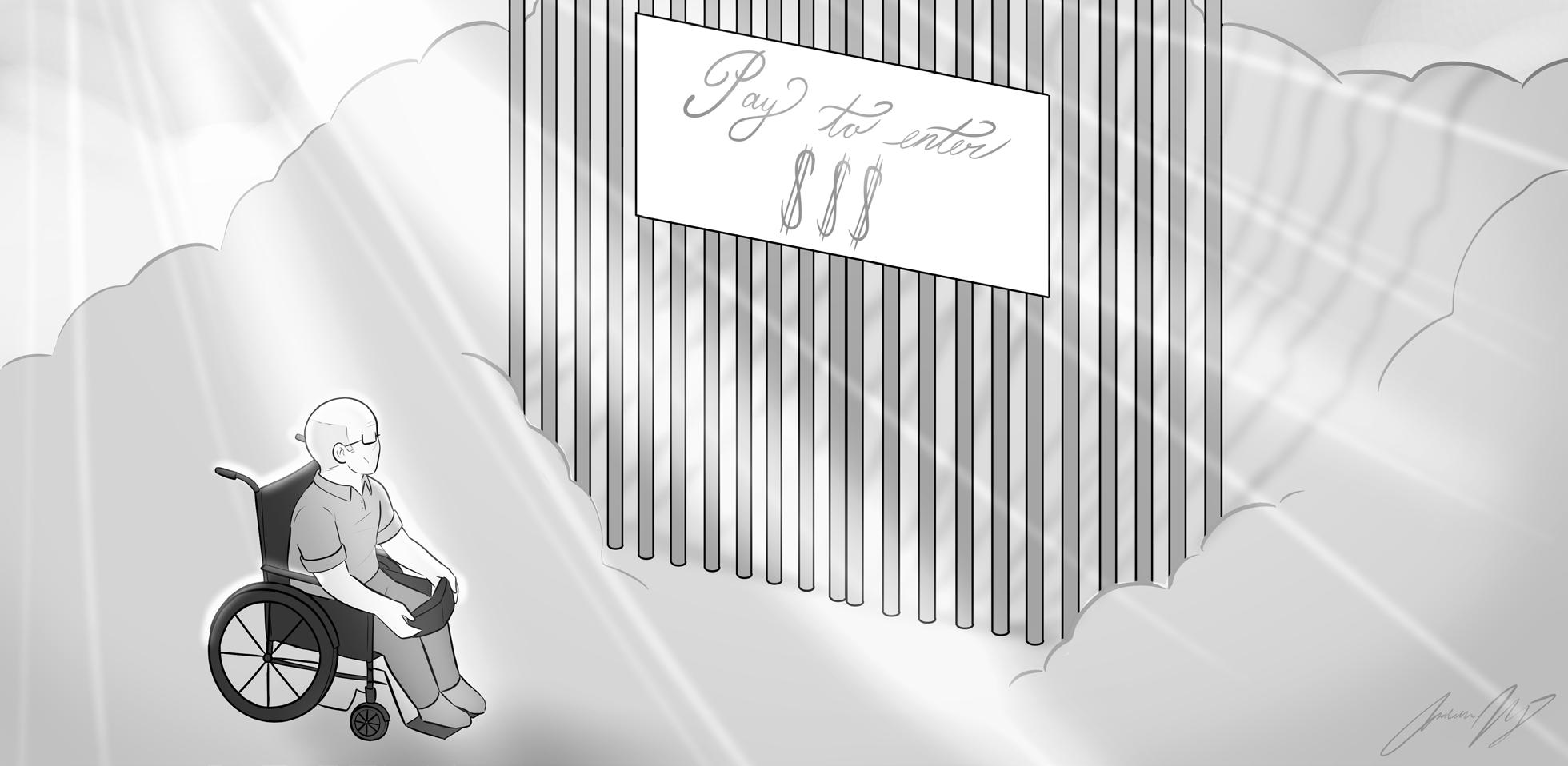
These disparities are exacerbated by racial and ethnic differences as well that result in a lower quality of nursing home care in facilities that serve minority populations. Studies have shown that minority groups often receive less aggressive pain management and fewer palliative care referrals.
Many Americans consequently face a harsh reality where the end of life may not only be marked by suffering and indignity but also by significant financial burden. As the aging population grows, the need for affordable and accessible end-of-life care becomes increasingly critical.
Addressing these challenges requires a multifaceted approach that includes better funding for Medicaid, stricter regulatory oversight to ensure quality care in all facilities, and initiatives aimed at reducing disparities in healthcare access and outcomes.
Financial access to care must be improved. Enacting comprehensive policy reform aimed at expanding hospice and palliative care service is the first step in ensuring that they are equitable and do not depend on one’s financial capability or social standing.
Congress should reclassify hospice as an essential benefit required in state Medicaid programs, and states should eliminate prescription drug caps that impair adequate end-of-life symptom management.
Only by making active change can the U.S. begin to work towards a healthcare system that upholds the dignity of every individual at the end of their life, regardless of economic or racial background. Placing a greater value on a human life due to socioeconomic status is absurd; wealth should not determine the level of comfort and care received at the end of a life.
Mulan or Melissa: Disney’s history of whitewashing
STORY KATE LIU PHOTO SUNHYE (SUNNY) CHOI
Controversy has arisen in the world of Disney. In midMarch, a fake casting was leaked revealing that the actress Avantika would play the role of Rapunzel. This fake list subsequently blew up due to the fact that Avantika wasn’t white, Indian. This type of negative
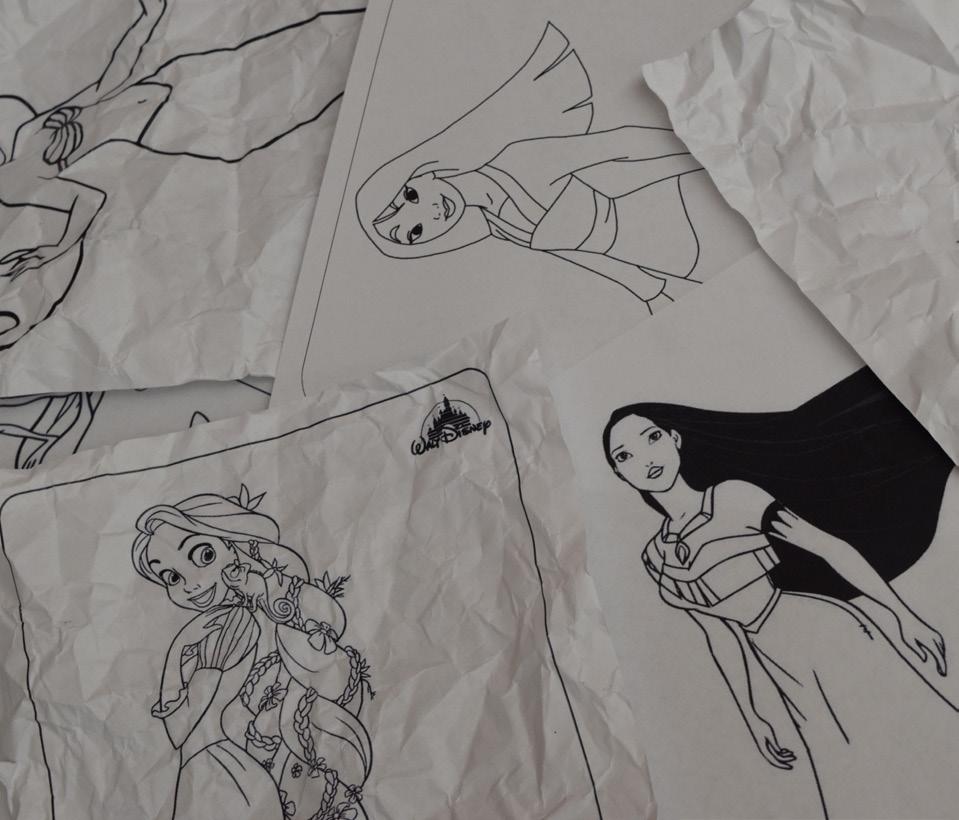
Baes and Nays

Familiarity in dread
I’m not sure if it’s the impending nature of all of my exams and the end of everything I’ve ever known for the past four years, but I’ve recently had an excruciating fear of losing familiarity. I had my last orchestra rehearsal and my last couple of concerts are coming up. And frankly, it’s awful.
I know I’ve already talked about my last firsts and my last lasts, but now that I’m living it, I’m starting to hate it. Yes, being around all of these people is so incredibly rewarding and I understand that everything I’m experiencing right now will never come again.
reaction also sets a dangerous precedent. The studios are now aware of what they would face if they choose to cast a person of color in Rapunzel. A backlash like this highlights the concerning undercurrent of racism that plagues the entertainment industry.
The primary justification used by the “fans” opposing this casting is the outcry that would ensue if a princess that was a woman of color was casted as white. This debate has been brought up twice already with the castings of Halle Bailey as Ariel in The Little Mermaid and Rachel Zegler as Snow White in Snow White and the Seven Dwarves. This argument, however, ignores the significance of these figures whose narratives are deeply entwined with their cultural identities, such as Tiana and Pocahontas. For instance, Pocahontas’ tribe is exploited because of their native resources, and Tiana’s Black identity plays a crucial role in the story by emphasizing the difficulties and goals she pursues in the face of discrimination. Rapunzel’s story, on the other hand, does not explicitly reference her German ancestry, making her race less significant to the story.
Therefore, it should be acceptable for a person of color to play Rapunzel because the character’s race is not really relevant to the plot. The princess’s ethnicity should not matter if the cultural background of the movie isn’t a major aspect to consider. Casting should
Frankly, I’m in a giant YOLO situation. The idea that everything is in fact coming to an end is unnerving.
The most grueling, unenjoyable, and catastrophic four years of my life will be behind me in about a month. At the time of publication, 27 school days to be exact. I’m saying goodbye to the people I’ve known since I was four, and that doesn’t come easily.
I used to say that I couldn’t wait to leave California and move across the country. But, now that I’ve paid a $650 deposit and bought my one-way ticket to an unknown sticky campus almost 3,000 miles away, it’s finally setting in.
As much as I’d like to believe I’ll stay friends with all of my friends now, it’s just not possible. In a perfect world I stay best friends with everyone at home and make new best friends off at my new “home.” But that’s not realistic and I’m trying my best not to set myself up with those kinds of overly optimistic expectations.
At the beginning of this year, I wrote my column on how I felt uneasy that my recently graduated friends were moving across the country. I’m still extremely close to all of the
only take into account the cultural specificity of a character’s ethnicity if it drives the plot or serves as a central theme. In contrast, casting choices should give equal weight to diversity and talent when a character’s race is incidental to the plot. More often than not, the racial backgrounds of non-white princesses in movies like Mulan and Moana frequently function as narrative focal points that guide the plot and message of the story.
Although the casting of non-white actors as iconic princesses is a positive step toward inclusivity, it is by no means a solution to Disney’s lack of diversity. Disney has a long history of failing to address this issue, but, this is a step in the right direction. Real inclusivity means more than just token gestures. Rather than depending only on casting people of color to promote diversity, more diverse Disney princesses must be created in order to achieve true inclusivity and representation across the spectrum of race, ethnicity, and culture.
Disney can truly represent the diversity of our world and give audiences a wider range of narratives to connect with and celebrate by bringing in new characters from a variety of backgrounds. A commitment to diversify the princess lineup goes beyond checking all the boxes, it embodies a dedication to honoring true representaiton and honoring the stories that make up our global community.
people I was worried would stop talking to me, but I can’t help but feel that as I make that change, I won’t be able to do the same.
I’ve become too comfortable in my familiarity and as senior year comes to a rapid close, I’ve begun to desperately try to hang on to what is left of this familiarity. In my last 27 days of high school, nothing will be like before and nothing that comes after it will be remotely the same either. So perhaps I have to learn to move away from this familiarity, sooner or later.
I started that column off with the sentence, “I have existential dread.” Needless to say, eight months later, I still feel the same. But as I move onto a new chapter of my life, I’m not sure if I’ll ever get rid of this feeling. If anything, it’ll stay, just in a drastically different form.
This feels oddly sentimental as I close out Baes and Nays for the last time. I owe a lot to existential dread, especially on Tiger Tiger gave me a lot of existential dread, but cured it all at the same time. I’m saying goodbye to this familiarity on Tiger soon, so before I get too sappy, I say goodbye to this segment and all of you in this way. And to that, I say “Goodbyes, they often come in waves.”
TIGER APRIL 26, 2024
HANNA BAE
PAGE DESIGN OLIVIA CHIN
6 OPINION
Privacy is nonexistent with data tracking
Without the ability to make informed decisions, it is impossible for consumers to ethically consent.
STORY ELLIE NAKAMURA, SONYA SHIMPOCK & CLAIRE MAO ILLUSTRATION SUNHYE (SUNNY) CHOI
In September of 2023, Google agreed to pay $93 million in order to settle allegations that the company had violated California consumer protection laws and was deceiving consumers by collecting information without their consent. These allegations stand true as the internet continues to violate consumer consent. As people’s lives revolve ever more around media, ads have begun to permeate every site, sometimes without the user’s knowledge. Without being properly informed on the extent users are being monitored, consumers as a whole are not consenting to this level of “data tracking” and are thus endangering their privacy and identities.
Consumer consent is an individual’s explicit permission for a company or body to access one’s personal information. In order to engage in informed consent or to make an informed agreement users must know how their data is being used, to whom it is going to, and exactly what information is being collected. While it is ultimately the consumer’s responsibility to understand these conditions and they are not forced to consent, companies are ethically responsible for making such information easily accessible, emphasizing the potential harms, and ensuring that information is not being collected or shared beyond what is agreed upon.
Companies often conceal the extent of data tracking through fine line print rather than properly disclosing negative effects to the user. As consumers are less likely to consent to data collecting that does not immediately pertain to their benefit, companies tend to lack transparency when it comes to their processing of information.
One such example is website cookies. While most people have heard of them, a majority do not understand what cookies are and their purposes. Cookies are text files that hold small pieces of data, like usernames or passwords and can be used to identify a computer and its network. The data is created upon connection, and labeled with
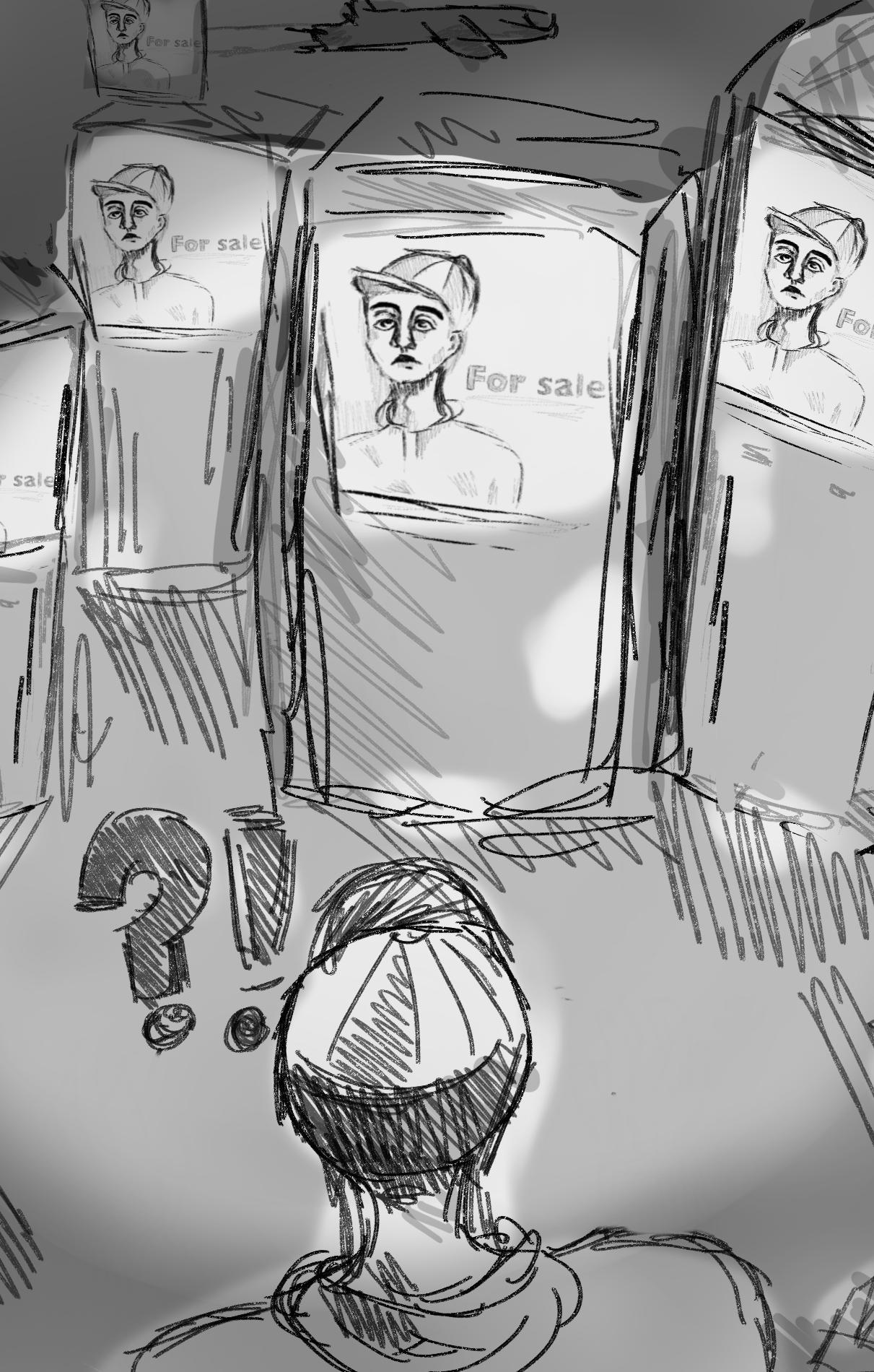
an ID unique to an individual user and their computer. Due to international laws, such as the EU’s General Data Protection Regulation (GDPR), the majority of websites are required to ask for permission when using certain cookies in order to ensure users are aware of the data companies collect about them and consent to these companies sharing it. However, the lack of information
and gray area regarding the extent collected and where the information is being distributed only creates the illusion of consent. Consumers are not truly given the ability to “opt-out.” Instead, they are being pressured into accepting terms and conditions without truly understanding the policies. Research has continuously demonstrated that most internet users do not read terms of service or privacy policies, so it is likely that they are not reading cookie policies, either.
The monetization of consumer behavior within this digital age founded the concept of surveillance capitalism, which is the idea that yielding personal information to large companies for a translation into behavioral data surrenders an internet user’s autonomy.
“Th[is] data is then computed and packaged as prediction products and sold into behavioral futures markets — business customers with a commercial interest in knowing what we will do now, soon, and later. It was Google that first learned how to capture surplus behavioral data, more than what they needed for services, and used it to compute prediction products that they could sell to their business customers, in this case advertisers.” Professor Emerita at Harvard Business School and author of The Age of Surveillance Capitalism, Shoshana Zuboff, said. In her book, Zuboff discussed the difficulty of participating effectively in society without “interfacing” with the channels that function as “supply chains” for surveillance capitalism’s data flows, referencing ProPublica secretly forwarding the individual usage data collected from the breathing machines used of people with sleep apnea to health insurers, where the information could be used to justify the reduction of insurance payments.
Data tracking without proper consent extends beyond the digital environment. It brings into question privacy and ultimately the consumer’s ability to make free choices. It is unethical for consumers to interact with sites without being properly informed, which emphasizes the need for companies to be transparent about their collection and use of data. At the end of the day, as much as it is in their nature to strive for profit, they have a greater moral

TIGER APRIL 26, 2024 PAGE DESIGN OLIVIA CHIN 7 OPINION
Navigating the early disappearance
Reminiscing over the joys of childhood is the favorite pastime of Gen-Z and millennials alike. However, social media mature concept of independence. While youth is a universal experience, Tiger explores how many are forced to
Some parents put their families on full blast on the internet in hopes of their 15 minutes of fame. These vlogs can range from monotonous daily routines to special occasions like vacations, birthdays, and holidays. The primary idea behind family vlogging is to document life’s moments and connect with viewers by sharing personal stories and experiences. However, family vloggers often cross ethical boundaries, exploiting their children for content and profit. This leaves children in these families vulnerable and objectified as content.
The rise in popularity of family vlogging is often attributed to the viewers’ desire for “reality” content that feels more authentic and relatable than traditional media. As family vloggers share everything from daily routines to significant life events, they cultivate loyal viewer bases who are invested not only in the content, but also in the families themselves.
Family vlogging rose to fame in the late 2000s and 2010s along with the mainstream popularity of YouTube. The Shaytards, one of the most well-known and pioneering family vlogging channels, started their official daily vlogs on March 5, 2009. The Shaytards documented more mundane aspects of life, content that viewers came to appreciate. Featuring unscripted and spontaneous moments from the family’s daily life, these domestic scenes often become vulnerable. The nature of this kind of vulnerability puts the children in these videos at risk.
Family vlogging, while popular and engaging, raises significant concerns about children’s privacy. Young children are often not able to give informed consent to having their lives filmed and shared publicly. Though children may verbally consent, the nature of risks associated with online predators and intimate displays on the internet is not a concept that can be fully understood for younger YouTube “stars.” YouTube parents share aspects of personal development, much to the discomfort of their children. They are no longer regarded as loved children, but as money making subjects.
The financial incentives provided by views, ads, sponsorships, and merchandise can lead family vloggers to prioritize content creation over the well-being of their children. A 2019 Pew Research Center study found that “Videos that featured a young child received an average of 297,574 views (median 56,527) compared with an average of 97,081 views (median 13,794) for those that did not.”
The pressure to monetize personal experiences can obscure the line between sharing and exploiting, especially when the subjects are too young to understand or consent to the implications of global exposure. As family vlogging continues to evolve, it is crucial for content creators, viewers, and platforms like YouTube to consider the longterm effects on children’s well-being and develop guidelines that protect young individuals from becoming mere characters in a storyline crafted for profit. Without such considerations, the legacy of family vlogging could be one of vulnerability and exploitation.
Family vlogging presents a paradox that juxtaposes the innocent intention of sharing family life with the world against the profound ethical dilemmas it generates. This genre, exemplified by channels like the Shaytards, has capitalized on the audience’s appetite for authenticity, turning private moments into public spectacles. While family vlogs can create communities and bring people together, they also pose serious risks to the privacy and autonomy of the children featured.
Say cheese: family vloggers exploit Entertainment
Children in the entertainment industry often come out with horror stories of exploitation and abuse — a terrifyingly tragic tale. The commonality of this abuse does not take away from the sorrow of it, but it points to a concerning pattern within show business.
Quiet on Set: The Dark Side of Kids TV is a new docuseries on Investigation Discovery and it premiered its first two episodes on Sunday, March 17. Its final two episodes aired the following evening, and the series dived into the accusations against the toxic culture of producer Dan Schneider Nickelodeon shows.
A centerpiece of the series was the revelations surrounding child actor Drake Bell, star of Drake & Josh. He experienced sexual assault at the hands of dialogue coach Brian Peck, who was arrested on 11 charges of child sexual abuse related to a previously unnamed child actor — now revealed to be Bell.
Jeanette McCurdy, a former child star on iCarly and the spin-off show Sam and Cat, also exposed the maltreatment she faced at the hands of Nickelodeon in her best-selling 2022 memoir, I’m Glad My Mom Died. Nickelodeon allegedly offered McCurdy what amounted to hush money to keep her quiet about her experiences on the show. She references “the Creator” in her memoir, an allegedly inappropriate man at Nickelodeon who pressured and emotionally abused her and other co-stars.

The experiences of Nickelodeon child stars are shared with other child actors from different origins. Dance Moms, a reality TV show that first aired in 2011, has garnered much fame for its drama and fights within Abby Lee Miller’s dance studio. The name, originating from the infamous moms of the dancers, adds to the drama that ensues. Many of the dancers have spoken out about the abuse they received at the hands of Abby Lee Miller and the producers of the show. Not even concealed, the exploitation of the children was played up for laughter and views on the show, creating drama where there was none. YouTube is not immune to this trend, even separate from the television industry. The SAKs channels, founded in 2008, published videos consisting of tween or teenage girls performing in skits usually related to a weekly theme. It included a network of channels, the most acclaimed being “SevenSuperGirls” — with more than 9.5 million subscribers and more than 5.6 billion video views — as well as “SevenPerfectAngels,” “SevenAwesomeKids,” and more. Each channel included seven girls assigned one day of the week to post a video. The girls on each channel had to abide by a suspicious amount of regulation, including always wearing skirts or being required to send the founder, Ian Rylett, a photo of the outfit they plan on wearing.
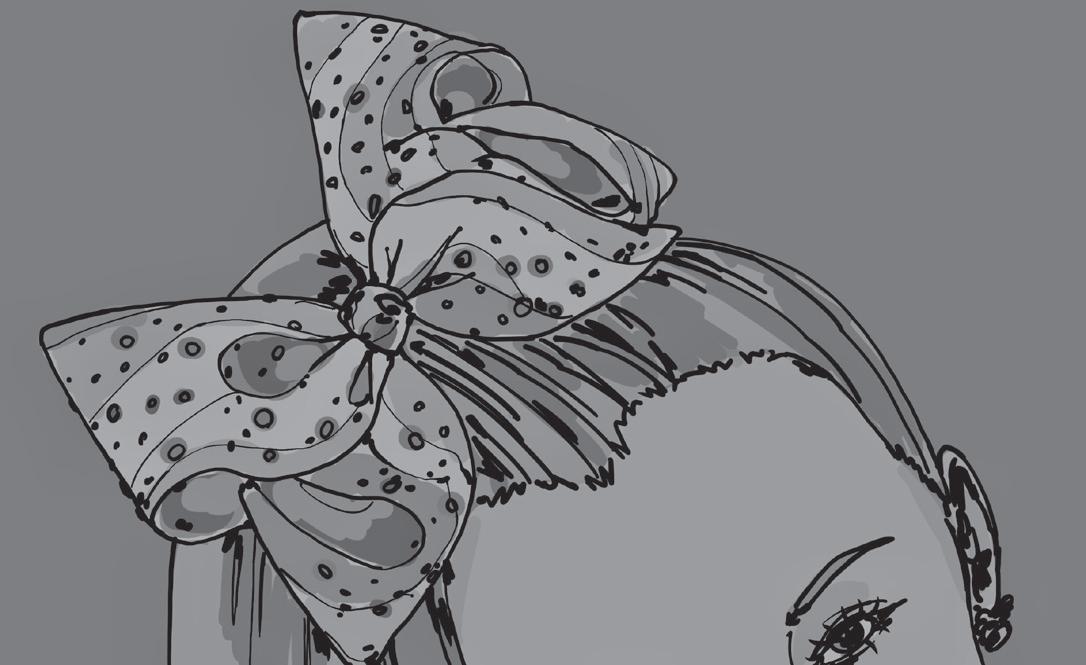

Rylett was later arrested in Florida for “lewd and lascivious molestation” of one of the young women who made content under his direction, and YouTube shut down the SAKs channels. Later, Brianna Motte, a former member of the SevenSuperGirls channel, posted a video detailing her experience on the SAKs channels as well as alleging herself to be the victim of the incident that resulted in Rylett’s arrest.
Child actors and performers around the world have been subject to this pattern of abuse and exploitation. The manipulation of children in the entertainment industry has continued to persist to this day, even spreading to the wider public. The sexualization of minors in the acting or performing industry has gotten out of hand, ranging from the debut of K-pop idols as minors, to the objectification of actors playing characters in a relationship.
TIGER APRIL 26, 2024
8
disappearance of childhood
media has increasingly romanticized adulthood and the grow up too fast and lose their childhood innocence.
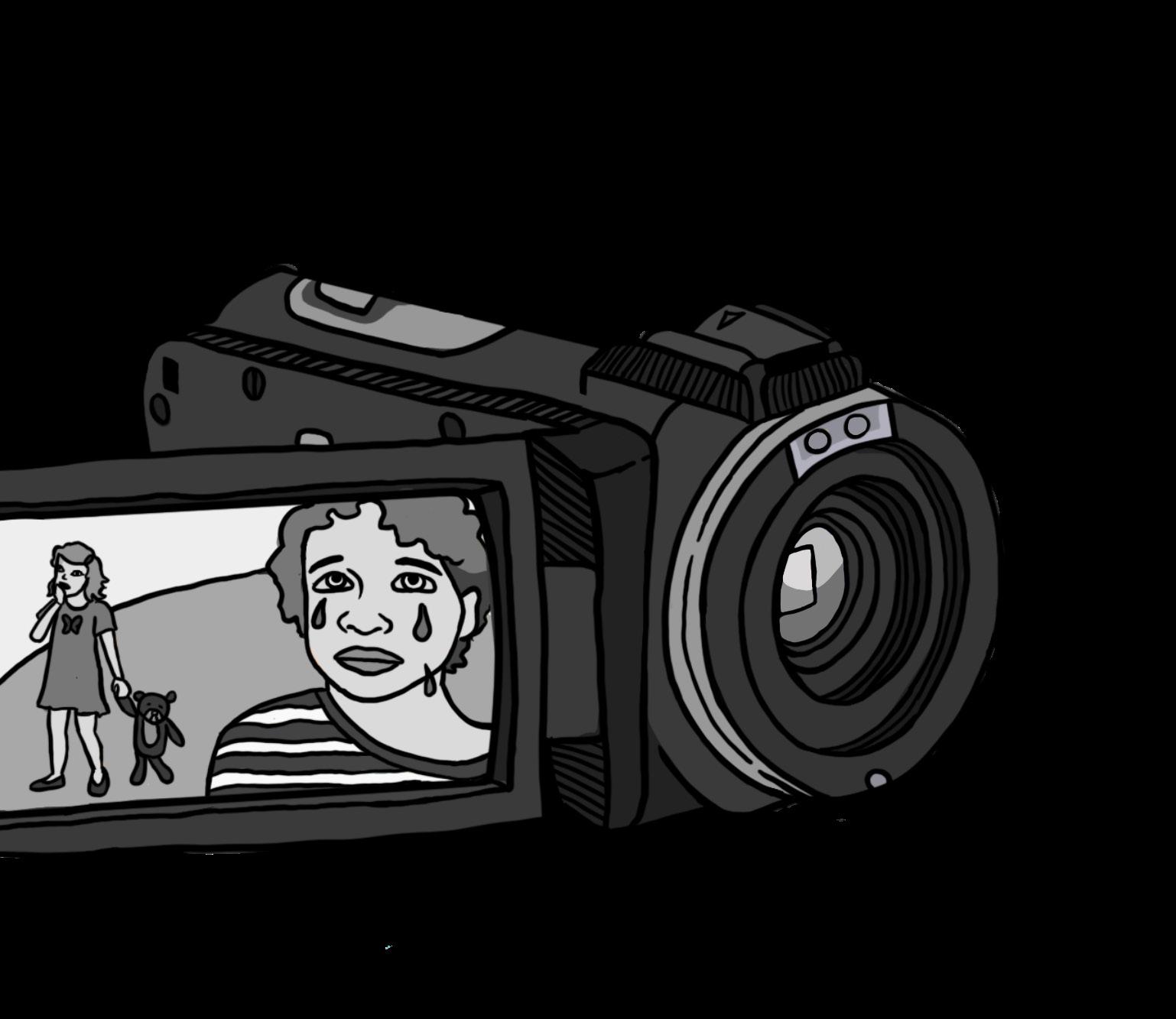
The allure of “kidulthood” in media
The 2023 movie Barbie made waves among moviegoers for not only draining the pink paint supply, but for being an especially playful tinge in modern theaters as well. Contrary to expectations, Barbie was not successful because it appealed to children. In fact, its largest viewer group was moviegoers between the ages of 18-29. It was successful because it played on many millennials’ worst nightmare: aging.

The phenomenon of “kidulting” emerges as a result of nostalgia around childhood and being a child again as children are forced to grow up too fast. Coined by 1950s business executives, kidulting is a recent cultural phenomenon in which adults partake in activities typically meant for children, such as playing in ball pits and dressing up to evoke feelings of nostalgia.
Kidulting is not just the habit of some regressive adults; it is a habit observed in an entire generation. It centers around “unleashing the inner child,” which begs the question if the inner children of millennials were ever unleashed to begin with.
The trend of “kidulting” gained popularity over the coronavirus pandemic, when rampant social media use and uncertainty brought the issue of mental health to the forefront of politics. In other words, the trend of “kidulting” did not emerge out of nowhere. It came to be as a way of pacifying the inner children of anxious young adults who have no other way of coping with their strenuous work and personal lives.
The prevalence of this trend, however, begs an important question: Are kids growing up too quickly? If this element of childhood is sufficiently fulfilled, adults will not need to indulge in it. Given that the phenomenon of kidulting emerged recently, it must imply that the lost childhood is a more recent phenomenon.
Kidulting is an innocent trend that promotes mental wellness, but at the same time, it is also a harrowing reflection of lost childhoods. In an evermore regimented world, it is easy to forget to get tangled in the realities of work. However, it is important to take care of the child within so as to not permit them to haunt this later.
Sephora kids
It is 2024, and kids seem more interested in beauty products advertised to aging adults than the classic toys and games that older generations so often associate with “childhood bliss.” Videos of 10-year-olds strutting around Sephora go viral on TikTok. Store workers complain about 8-year-olds buying hundreds of dollars worth of beauty products. These trends and loss of childhood seem to define Gen Alpha. But tweens are not necessarily at fault.
The tween phase is awkward. Complete childhood innocence is fading, but the future has not yet come into focus. Tweens fit into neither the category of “kid” nor “teen.” Change hides in every corner.
Generation Alpha, the current swath of kids experiencing their tween years, has grown up uniquely from other generations due to the constant draw of visual media. Whereas past generations may have communicated with friends through call or text, Gen Alpha relies heavily on photos shared through social media and video calls. Apps like BeReal ensure that users always keep up some form of presentability. The pressure for kids to look perfect never lets up.
“Social media influencers are expanding their target group, so there’s a lot of pressure for kids to fit in and figure out what’s trending to feel connected with their friends much earlier than they need to be feeling that,” Sonia Rodrigues, a senior director of Child and Adolescent Services with Rutgers University Behavioral Health Care, said to USA Today.
Many dermatologists have voiced their concerns regarding the negative impacts that retinol products and exfoliating acids — the products that influencers talk up — have on the still-developing skin of young people. These products can worsen acne conditions as well as cause rashes, itching, burning, inflammation, and allergic reactions.
“Kids are often finding these products on social media when an influencer raves about the changes their skin has undergone, but they don’t realize the person they’re watching on a screen is speaking to an older audience,” Javon Ford, a cosmetic chemist, said.
A New York City Sephora worker noted to CNN that kids often make a beeline for the trending and expensive skincare brands, like Drunk Elephant, that they have seen influencers gush about on social media.
“It’s like an aspirational brand to them,” Jennifer O’Brien, a former New York Sephora store manager, said to CNN. “[Kids] see people using products from Sephora on social media. So it’s almost like a status symbol to buy products from there even if they don’t even know how to use them properly, but they can show their friends that they have them.”
Kids are constantly told through entertainment and influencers how they should be presenting themselves. Preteens are especially vulnerable to peer pressure and the need to conform with those around them when their own identities are not yet clear. In a time of struggle and lack of sense of self, it is only natural for kids to adopt the practices of those whom they believe to have it all: influencers, TV characters, other pop culture icons, and even their own peers. This leads to an almost ritualistic practice of the same skincare routines and trending looks assuming control of a whole generation.
The idea of conformity has existed long before Gen Alpha came to be. Today, Sephora kids are simply Gen Alpha’s solution to a problem that has plagued generation upon generation. The media that surrounds today’s children is forcing — “influencing” — them to abandon their childhoods for the allure of the “teenage dream” and the freedom that only truly comes with time. It tells them who they should be before they have the
to find out for themselves. It tells vulnerable people to throw away what they have before they know exactly what they are losing.

chance
PAGE DESIGN OLIVIA CHIN, ISOLE KIM, & SOLANA SINGER ILLUSTRATIONS OLIVIA CHIN & ISOLE KIM
TIGER APRIL 26, 2024
STORY HANNA BAE, ZOE CHEN, MORGAN SUN, & LINDA YUN
9
FEATURE

Everyone loves mean judges
Reality television has an extended love affair with brutal honesty.
STORY SONYA SHIMPOCK ILLUSTRATION HEEJOON (JOON) LEE
Competitive reality TV shows seem to perpetually feature a “mean” judge — typically, a snide British man with a penchant for making children cry.
The most familiar example of this is Simon Cowell, the original “mean” judge who managed to spin his behavior into a PR move that rocketed him to fame.
In the nine seasons that Cowell judged for American Idol , he had no shortage of scathing insults; but instead of popularity suffering while Cowell primly informed competitors that their singing was akin to a “cat thrown off a skyscraper,” American Idol propelled to No. 1 in ratings.
Many reality competitions on television seem to have their own “Simon.” America’s Got Talent has Piers Morgan, So You Think You Can Dance has Nigel Lythgoe, The Great British Bake Off has Paul Hollywood — all of whom, curiously enough, are older British men.
“There is kind of a belief amongst Americans, true or not, that the Brits are perhaps a little more blunt and more to the point,” Morgan said.
Morgan believes that it is no coincidence that a majority of mainstream “mean” judges are British, stating that Americans simply equate “meanness” with honesty.
“The brutal truth is that we enjoy watching other people suffer,” Toby Young, a writer and former judge for Top Chef , said. “It was true of the Romans and it’s true of us. Reality TV is the 21st century equivalent of the gladiatorial arena.”
A gladiatorial arena is not a poor comparison. Morgan once buzzed a child out of America’s Got Talent solely
because he did not like her costume. Steven Reiss, a psychology professor at Ohio State University, conducted a survey a few years after American Idol premiered in order to investigate why people watch reality television. His findings align with Young’s ideas.
“We found that people who have a higher-than-average need for status — a need to feel important — were more likely to watch, presumably because the shows project status values like popularity, wealth and attention-seeking,” he said. “If a contestant is really stinking it up performance-wise, audience members with a high need for power will want to see the person judged poorly, perhaps even humiliated.”
Cowell, who openly admitted to throwing his first insult at four years old, fulfilled this need. His greatest hits include: “If your lifeguard duties were as good as your singing, a lot of people would be drowning,” and “You are a saucy little thing, aren’t you?”
Leaning into the media-branded “bad cop” images offers judges both a better audience reception and a more professional appeal. Acting in harsh or overly critical manners can often allow judges to appear more like experts.
“It’s not as meaningful to get a compliment from someone who’s always nice. In past seasons, you’d see people running out of the [judging] room saying, ‘Simon loved me!” said Robert Thompson, a professor of television and pop culture at Syracuse University. “Simon was always the one people cared about, because he was the hardest one to get.”
However, the lasting era of “mean” judges seems to be coming to an end. American Idol has rebranded itself; it is still a show that makes people cry, but judge Steven Tyler, Cowell’s replacement, deems it, with “tears of joy, baby.”
Charlotte’s Web
CHARLOTTE DEKLE

The last web
Now that college applications and decisions are over, I seem to have a surplus of free time. Could I possibly use this time to do something productive or cease my incessant procrastination? That would be the practical route to take but, alas, no. To pile onto this insane idleness, this is also my last column. So, in theory, I should be trying to imbue it with some hidden meaning. But, double alas, no. Instead, I want to take up this column space to recommend some random movies and TV shows that I feel are underrated in some way, or maybe I feel people just need to check out.
To narrow the scope of the suggestions, I will refrain from recommending any show I’ve already discussed or alluded to (e.g., The West Wing or Poor Things ).
British Soap Operas: For a more concrete example, see EastEnders. If you have never taken the time to enjoy a British soap opera, you are truly missing out. In any given episode, a dozen characters with accents of varying understandability could be battling gang warfare, a deadly disease, coming out, a love triangle, being pushed off a roof, and credit card fraud. My recommendation for viewing is to pick a character and track their storylines because then you get not only a totality of one character, but also you can get a taste for auxiliary storylines that might interest you.
Wonka : I can hear you scoffing on the other side of this paper, but I promise, the new Wonka movie starring Timothee Chalamet was an absolute delight.
Seinfeld: I thought that we, societally, would’ve come around to this show after the Friends craze of 2018 but we did not. I also made this show my entire life in middle school so for the sake of tween Charlotte, give it a watch. Start with the second season though.
Scandal: OLIVIA. POPE. One of the strongest characters ever put on celluloid. Shonda Rhimes knows how to write complex female characters and Olivia Pope is no exception. It also has some fascinating inside-Washington drama which I adore. It’s A Wonderful Life: Undoubtedly the best Christmas movie. A man contemplates suicide and thinks his life is worthless; clearly it abounds with Christmas cheer.
Thankfully, this is not the last piece I will ever write in my prolific career as Tiger staffer, that would be the farewell, but I still feel a twinge of sentiment while writing my last column.
I’ve also been reminiscing about the story of Charlotte’s Web, specifically the ending which has taken on new meaning for me. The eponymous spider dies of old age (natch) and has expended all of her energy caring for Wilbur and creating her egg sac. I feel that in a metaphorical sense, I have given all I could to this paper. I have triumphed (when Mr. Afram emailed me about how much he enjoyed my birthday column, thank you Mr. Afram) and I have lost (apologies to Richard Nixon). I have spent what was left of my creative juices to write a column for this paper every month and write articles for the past three years. For that, I may die happy and eternally grateful. To steal from another talking pig movie that I recommend, “That’ll do, pig. That’ll do.”

TIGER APRIL 26, 2024
PAGE DESIGN ISOLE KIM 10
Monster hints at the chaos of assumptions
Kore-eda Hirokazu explores the juxtaposition of childhood innocence and dangerous unpredictability.
 STORY SOLANA SINGER
STORY SOLANA SINGER
VISUAL
KAITLYN LEE & ISABELLE WONG
Kore-eda Hirokazu’s Monster was awarded the best screenplay of the Cannes Film Festival, a year ago, in 2023. At first glance, the film centers on the experience of fifth grader, Minato Mugino. However, the story unravels into a far more complex tapestry of perspectives and misunderstandings.
Told in three parts, from the eyes of Minato’s mother, his teacher, and himself, the movie weaves an intricate web of interconnected stories that explain how his life is touched by those around Minato. With each part informed by the internal biases of its primary storyteller, the movie is almost reminiscent of one long game of telephone, where the events recounted in the first and second parts are distorted representations of
what is shown to have actually occurred in the third. For those who have not seen the film but are planning to, a discussion and analysis of its plot are impossible without spoilers, so proceed with caution.
The first part of Monster is told from the perspective of Saori, Minato’s mother. Saori’s only glimpse into her son’s world is through what he tells her at the end of school, each day. Throughout the movie, she watches from the sidelines as Minato’s behavior grows increasingly strange and erratic. There are nights when he does not come home at all, and she has to go looking for him in the wilderness around their house. Minato tells her that his teacher, Mr. Hori, has been physically and emotionally abusing him. She goes to his school several times to investigate and sort out a deal with him. Instead of taking direct action and firing Mr. Hori for his alleged misconduct, the principal, Ms. Fushimi, only has
insincere apologies to offer to Saori. For this, Saori sees her as inhuman and unfeeling.
Mr. Hori tells the second part of the story. Through his perspective, the audience discovers his small apartment, his girlfriend, and his experience in the classroom. It is revealed that he never actually abuses Minato, just accidentally bumps him with his arm once. After several incidents Mr. Hori has observed, he firmly believes that Minato is bullying another student in his class, Yori. Despite his innocence, Mr. Hori is eventually forced to plead guilty to the accusations of abuse thrown at him, losing his job to save the school’s reputation.
In the third part of the film, the complete picture is finally seen from the viewpoint of Minato himself. Minato and Yori quickly become close friends, but Yori, abused by his alcoholic father, is seen as alien by the other students. Minato pretends to dislike Yori in school to keep up appearances, which leads Mr. Hori to believe that Minato is bullying Yori. Instead of hanging out at school, they disappear to their secret sanctuary in the forest, an old train car. Minato admits that Mr. Hori never truly did anything wrong, and even has a conversation with the principal, who, despite prioritizing her work status over the truth, is revealed to have a softer side.
“Who is the monster?” is a question repeated throughout the movie, a sort of inside joke between Minato and Yori. This question pulls not only the characters, but the viewer as well, into exactly what Kore-eda warns against — the allure of throwing blame. In the first part, told through Saori’s perspective, Mr. Hori and Principal Fushimi are seen as the monsters. In the second through Mr. Hori’s, Minato is the monster.
In the third, most pure version of Minato’s story, there appears to be no one monster, but rather an accumulation of small mistakes made by different characters due to the pressure exerted on them by society.
After taking the audience through several intense turns, the film ultimately points to the perspective that assumptions are the true monsters. Along the way, Koreeda highlights the flux state of childhood, balancing both innocence and dangerous unpredictability. With Monster, Kore-eda suggests the idea that maybe everyone has animal brains — that something of a monster hides in everyone, just for being human.
He did it again: finding heaven listening to Found Heaven
STORY SOPHIE MERTZEL ILLUSTRATION SUNHYE (SUNNY) CHOI
Found Heaven is the newest album by singer Conan Gray, released on Friday, April 5. At only 25 years old, Gray has released an EP and three albums to breakout success. He is embarking on his fifth multi-country tour beginning this summer.
Gray began uploading covers and “vlog” content in 2013 to YouTube at 15 years old. While he began with videos about everyday life, as years went on the content became more music focused. His first single, Idle Town, was released in 2017. It was followed by an EP titled Sunset Season in late 2018. Gray has consistently put out music ever since.
Found Heaven is a synth-heavy pop album. It was announced on Wednesday, January 31, following the release of three singles. The first, Never Ending Song was released almost a year earlier, in March 2023. Gray began teasing the start of a new musical era at that time, sporting a more grunge look with stars popping up all over his promotional material. The cover art for Never Ending Song affirmed this change, with lighting and neon lights creating contrast with his previous releases’ darker, lower contrast artwork. When asked about this transition, Gray commented that he wanted to “surprise people.” Gray’s second single for the album, Winner, feels like a departure from the brightness of Never Ending Song in the beginning, with a more classic Conan sound of piano and vocals. However, as the song continues, it becomes clear as part of the same universe as the previous single. After Killing Me was released in October, the infectious energy of this new era felt steadily established.
Gray’s last album, Superache, was in the indie pop genre with a more somber tone and clear heart and pain coming through in many songs. The release of Never Ending Song following this album came with a tone and genre shift. This album is more experimental in the context of Gray’s previous work, with a 1980s tie in the synth-heavy sound throughout. While the sound on the surface is quite different, the album continues to feature heartfelt and emotional themes.
Two standout songs include Alley Rose and Bourgeoisieses Alley Rose is an emotional song about being left by a partner. The track starts slower, with solid resonant electric keyboard notes and softer singing in the first verse. The transition to the chorus is quick with more
’80s inspired synth and heavy instrumentation to go along with Gray’s booming vocals. Bourgeoisieses is a departure from the main themes of the album, describing the societal want to be a part of the upper classes where they do what they want and face no consequences. It makes fun of the rich, going as far as to misspell the plural of bourgeoisie in the title. It is one of the most fun songs on the album, with an itching-to-dance, lively energy.
Gray uses an impressive combination of a very deep register and high vocals that continues throughout the album, a pattern not present in his previous work. Gray’s vocal work has the ability to strongly come through
whether in songs with minimal or very heavy production. While this album features very fun and interesting backing, his fantastic voice is the center of every song. The album covers the very painful themes of a hard breakup, accepting oneself, and family.
The majority of these songs detail these raw, honest experiences, wrapped within upbeat tracks.
“I wanted to make something that felt like a true reflection of who I am these days,” Gray said. “It felt like a celebration of emotions rather than mourning them. It’s beautiful that we get to grow and change together.”
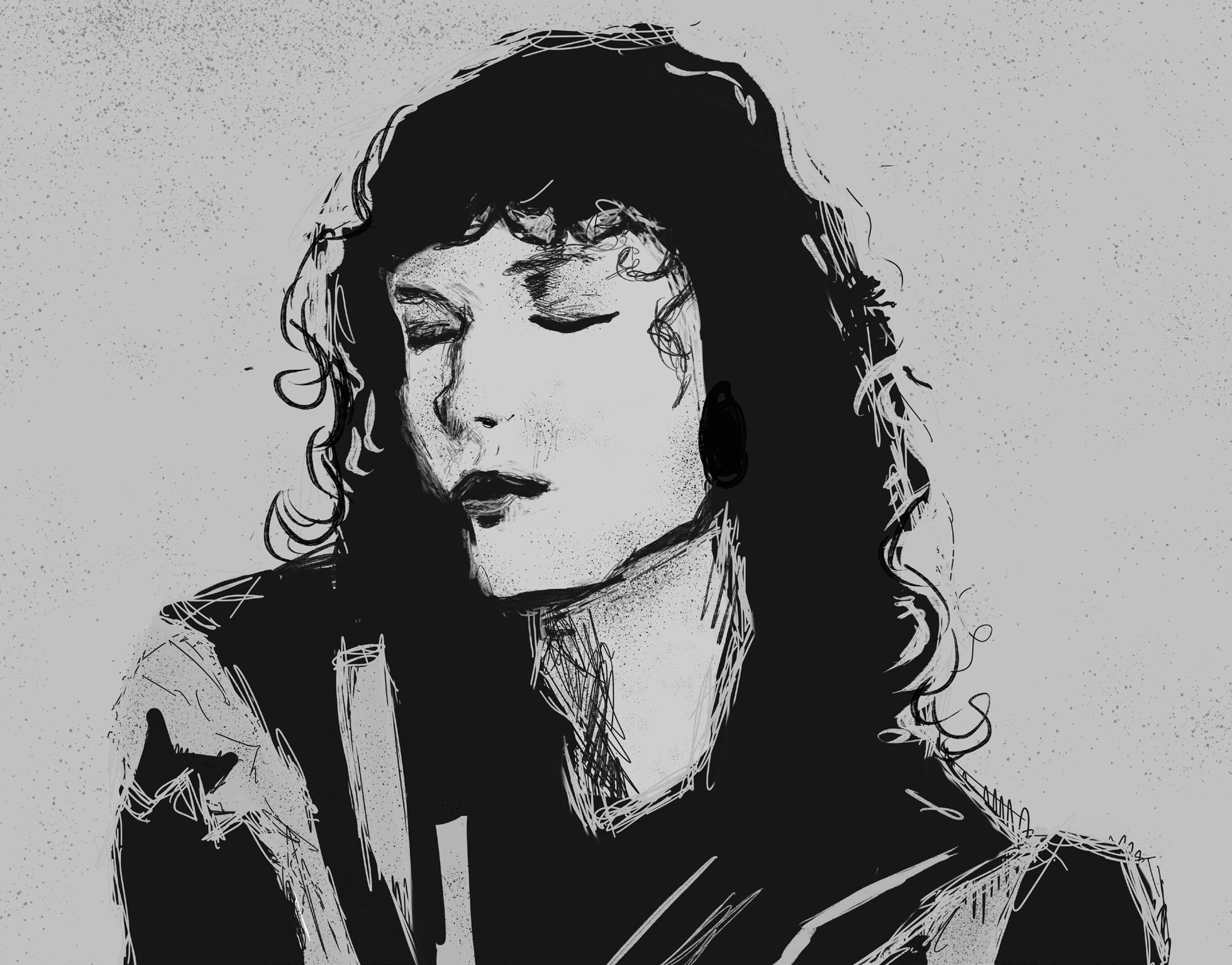
TIGER APRIL 26, 2024
PAGE DESIGN ISOLE KIM 11 FEATURE
Beyond first impressions: overcoming bias
Unintended compartmentalization harms marginalized groups, establishing an inequitable society.
 STORY ELLIE NAKAMURA ILLUSTRATION HEEJOON (JOON) LEE
STORY ELLIE NAKAMURA ILLUSTRATION HEEJOON (JOON) LEE
The first impression is one of the most impactful social exchanges between humans. Almost instantaneously, judgements are made about an individual based on the other’s limited knowledge. From miniscule details like the firmness of their handshake or their timeliness, it is second nature to assume characteristics about someone based on their immediate behavior. However, these assumptions are often inaccurate. Humans are constantly trying to compartmentalize all aspects of their environment, including people. While inevitable, false stereotypes about groups can extrude both positive and negative outcomes.
Cognitive biases are the human patterns of unreasonable compartmentalization. In order to adapt to an unfamiliar situation, people apply stereotypes to individuals to allow the other to make decisions quickly based on those
assumptions. However, they distort reality, as it ignores that initial judgements are often wrong.
Anchoring bias, which is developed by relying on singular pieces of information, limits the ability to see an entire individual. Combined with conservatism — the practice of not properly revising opinion once new information is presented — this results in a misconstrued relationship.
Biases have a monumental impact on society. Without acknowledgement and active effort to limit them, minority groups are marginalized and discriminated against, even unintentionally. Humans naturally gravitate towards others with similar characteristics and qualities, as they are perceived to be “safer.”
These people can be of the same race, who often, but not always, hold the same cultural values. However, such unconscious preferences alienate those who are considered less familiar, and by extension “unsafe.”
Continual execution of decisions that are influenced by these close-minded ideas affect the status and treatment of minorities for the worse. As personal beliefs often reflect larger social norms, prejudiced bias can influence major decisions that end up further separating minorities from majorities.
Humans developed the ability to compartmentalize to adapt to unfamiliar situations. People are able to make decisions quickly even with limited information by applying similar experiences, and are relatively able to determine social cohesion within minutes of interacting. This limits relationship conflict. Relating past experiences to new scenarios ultimately encourages compassion and understanding.
People have built communities of common ethnicities that have become cultural meccas due to bias towards familiar appearances. From Koreatown to Olvera Street, these congregations have provided the foundation for ever-growing cultural evolutions and appreciation, inviting further tolerance on behalf of other ethnicities.
False stereotypes especially harm minorities. It can limit access to resources like medical care and housing, thus forcing lower living standards.
In the early to mid 1900s, redlining directly discriminated against African Americans by restricting financial services from areas inhabited by a majority marginalized population. The introduction of redlining was meant to prevent African Americans from moving into majority white neighborhoods, by raising housing prices and not offering loans.
The halo effect contributed to white supremacy at the expense of every other ethnic group, as physical traits were associated with positive qualities. Racial bias enforced further racial segregation that resulted in decades of poverty still being unraveled today.
Humans must learn to judge individuals by their entire identity rather than initial experiences to limit bias. With the acknowledgement of biases, people must make a conscious effort to act in contrast to unfair beliefs to establish an equitable society.

TIGER APRIL 26, 2024
PAGE DESIGN EMIKO ESSMILLER & ISOLE KIM 12 FEATURE
TAAGLAA: Venice, California
TIGER’S AWESOME ADVENTURES IN THE GREATER LOS ANGELES AREA
 STORY CLEMENTINE EVANS PHOTOS SAMANTHA SHIROISHI
STORY CLEMENTINE EVANS PHOTOS SAMANTHA SHIROISHI
Venice, CA, showcases a number of interesting attractions, similar to its namesake in the motherland of Italy. However, I decided to venture to just two of them; one being tranquil and quiet, the other being lively and full of obnoxious humans.
Our trip started out the way any trip is supposed to: bumpy. I arrived at the charming Bellissimo Venice cafe an hour before Samantha did, and the day did get better once I remembered that we would be graced with the company of Tiger alumna Allie. Once we were all accounted for, we headed over to where Allie and Samantha parked so I could throw my puffy jacket in their car, because I was definitely not going to be wearing it in the sunny, 65 degree weather.
We started by heading to the Venice Canals, built by Abbot Kinney in 1905 as part of his Venice of America project. The three of us did not have to walk too far to find the many bridges that connected the canals to one another. We all started taking photos of the Smiski figurine I had brought with me, plus the one that Allie had given me earlier.
Their little green forms accented the marshy, green waters of the canals perfectly. Since I was too lazy to keep pulling out my notepad, I decided to record voiceto-text messages to send to Samantha so I could look back at the chain of messages and use those for reference for the article. I kept saying different hashtags to better memorialize the day in a simpler, cut-to-the-chase way.

AMONG
THE CANALS AND BOUTIQUES, Venice, CA, provides an oasis for travelers and locals alike.
Samantha, Allie, and I walked along the canal banks and took the scenic route whenever possible. We saw eccentric boat designs in front of almost every canalfacing house; from hippo-shaped boats to pirate-themed homes, these canals had it all.
We also found a Little Free Library on a tiny deck in front of a house that we simply had to take a closer look at. In the dark depths of the shelves, Samantha found a huge, round, black bottle of vodka, which we also made her pose with so we could snap a few photos. Samantha was going around picking flowers from different bushes as I was taking pictures of Allie hiding behind a telephone pole near a little park.
This area of greenery also had a designated duck pond, gated off from children who may have wanted to chase away the birds. I especially had fun naming almost all of the ducks I saw; There was Cheryl, Marcel, Eric, Katherine, Michael, Sadie, Robert, Barney, Piper, and Phil — all off the top of my head.
We finished our walk along the canals and started heading over to our second destination: Abbot Kinney Boulevard. Samantha and I had already made a list of the shops we wanted to go to before going there, so we pretty much knew how to navigate the chaotic street with different stores.
However, our previous walk took the energy out of us, and we needed nourishment. We spotted a sign that had the welcoming words of “Acaí bowls” in front of Oakberry on the boulevard. While we were eating, I decided to take the opportunity to film a quick video with Allie for the Tiger
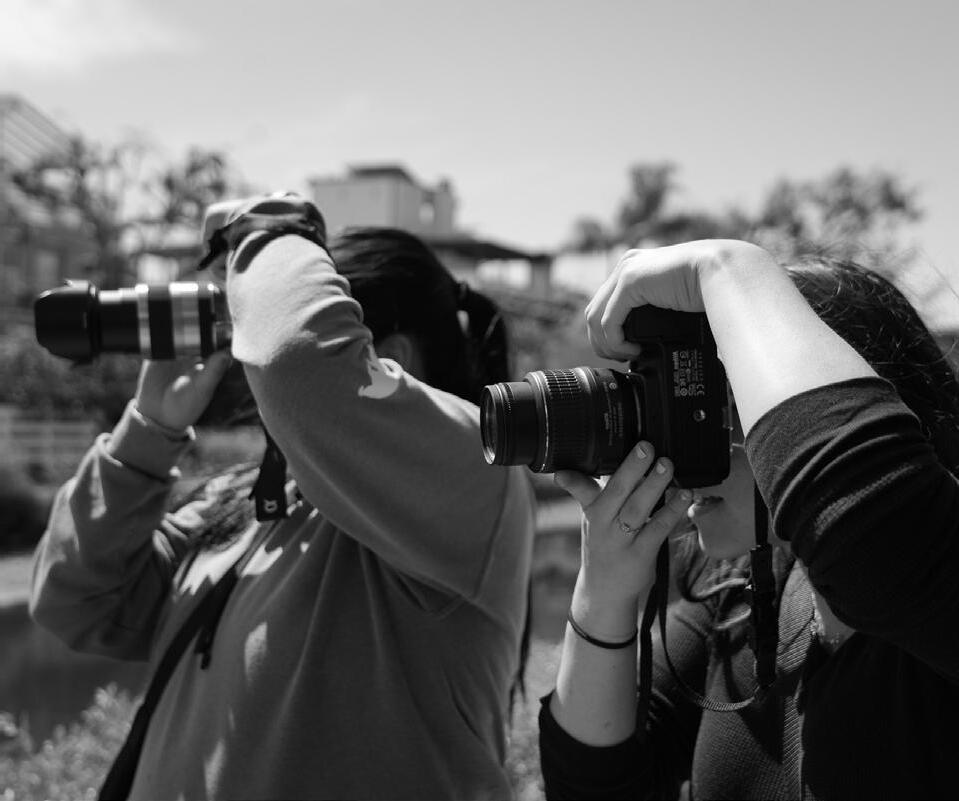

Instagram for recruitment purposes. Large microphone in hand, I put on my reporter’s cap and asked one simple question: “What do you miss most about Tiger?” Once we had finished our tasty bowls and my short and sweet interview, we ventured off toward the rest of the shops.
Our first stop was Burro, a store with a last-minute gift vibe to it. They had a whole array of different greeting cards and another section of candles and clothing. We left Burro and headed to one of Samantha’s stores, Huffet, a Scandinavian store. It shelved everything from candy bars to home decor.
We saw their quaint collection of Moomin items and took several photos before exiting. We then walked to AppleDoll, a small makeup store that housed a vintage photo booth. Sadly, the photo booth was out of order and we did not have time to wait an hour for it to be fixed.
As disappointed as we were, we continued to one last store: Aviator Nation. Although their items were on the (very) expensive side, they did have a ping pong table in the back, where I absolutely destroyed Samantha and Allie. As much as I wanted a pair of the perfect blue, baggy pants at the store, I could not stomach the over $100 price.
We left the store after too many rounds of ping pong and started walking back to Allie’s car. The walk back seemed much more difficult than the walk there. Once we arrived at her car, I had an almost tearful goodbye, wishing Allie a calm rest of her Spring Break before she had to head back to college. Although I did not buy anything tangible, the day still had its memories of tiring walks, yummy food, and awesome ping pong.

TIGER APRIL 26, 2024 PAGE DESIGN EMIKO ESSMILLER & ISOLE KIM 13 FEATURE
PRO/CON: Charging for game tickets
Tiger discusses the benefits and drawbacks of requiring tickets to attend SPHS sporting events.
Ticket funding betters the athletic program
STORY ROSE VANDEVELDE
PHOTO ZOE CHEN
At any competition that South Pasadena athletes attend, there are sure to be dedicated fans cheering the athletes on, whether they be parents, other students, or members of the community who enjoy watching SPHS athletics excel.
Despite the cost of attending certain athletic events, such as football, basketball, and some CIF events, the price does not prohibit student and fan attendance at the games. Continuing to charge for tickets benefits SPHS athletics as a whole and outweighs any drawbacks of ticket costs.
The money made from SPHS football and basketball games goes to support the athletic program itself, not the individual team that sells the tickets, which betters the program as a whole.
For students with a SAC (Student Activity Card) card, the games cost $5 to attend, and $10 for anyone without a card. While the cost of attending a game is relatively low for individuals attending, the money earned when many people attend contributes significantly.
Maintaining a high-level athletic program such as the one at SPHS is expensive, and the money made is deposited into the ASB athletic account to help pay for expenses. These rest of the expenses are paid for by the money made from SAC card sales.
Without the income from the tickets, it is likely that the necessary funding would have to come from a different source, or not be secured at all.
“Buying tickets for our high school sports games supports the team and personally
I want my athletic career to be funded so we can have a proper season, so I don’t mind paying for tickets,” an anonymous athlete said.
At football games it is not uncommon for the student section to be completely full, even with the capacity of the Ray Solari stadium, and at boys’ basketball games it can be hard to find a seat at home games.
Ticket admission can help to regulate the number of people going to the games so that the games are not overcrowded and are more enjoyable for anyone attending.
Additionally, charging for admission means that people attending the game are generally committed to watching and supporting the team, creating a better environment overall.
“I think paying for the games is completely worth it because I get to hang out with my friends and I feel like I am supporting sports overall.” a student football fan said.
Requiring tickets for sports that receive much smaller crowds would most likely discourage people from attending, and would be more damaging than helpful.
While it may seem unfair to sports that do not charge for entry, in the end it is more beneficial to the athletics program as a whole, as well as individual teams, when only sports with the most significant attendance have ticket fees.
Paying for entry into games can often seem frustrating or annoying for people attending, but without the support (both financial and physical) of dedicated fans and the community, SPHS’s athletics program would not be what it is today.

Charging hurts both athletes and the student body

STORY & PHOTO ZOE
CHEN
The cost of admission into SPHS’s home league games is highly variable. Some sports, like football and basketball, charge wildly high amounts for entry — often $10 per game, non-SAC.
Most others, from badminton and baseball to volleyball and water polo, allow spectators into their games free of charge. This skewed variation creates two main problems.
Many students treat high school sporting events as social outings; this is, in fact, highly encouraged by the National Federation of State High School Associations. The federation recommends that students attend games, as it creates an opportunity for social gathering, highlights school pride, keeps students connected with one another, and supports the playing team.
However, choosing to be a supportive student at football and basketball games quickly drains one’s pocket. Attending the five home, league basketball games of the season would cost an individual a total of $50 in admission charges, and a friend group of five a whopping $250.
When costs discourage students from attending, students miss out on a large part of the high school experience.
Expensive tickets that deter students and community members from attending games can cause the playing teams to suffer as well. Competing in front of a large audience creates a sense of heightened motivation for athletes on the court or field, which is known as the “Spectator Effect.” A smaller or less energetic crowd can lead to a decrease in athlete performance.
Low turnout due to high prices hurts both the general student body and the athletes themselves.
Still, charging for certain sports and not others places the for-profit sports on a pedestal; it gives them more value to both the school and the student body.
Football charges for game entry, but the school works hard to ensure that attending football games is a desirable experience. A wide variety of concessions are sold. The band and Pep perform. Whole spirit days are centered around big games.
The Homecoming halftime show includes fireworks. The time, money, and advertisements poured into forprofit sports can often overshadow the simple achievements of their free-ofcharge counterparts; as if the free sports are not good enough or play too poorly to charge.
This is entirely false — in the fall, girls’ volleyball had a longer CIF run than football, and volleyball games can easily match the energy that basketball games possess; girls’ swim is currently undefeated; and track has set numerous school records this season.
Free-of-charge sports are often dismissed as “less than” despite exceptional performance. Tickets for $10 cause a decrease in student turnout at games and can negatively affect the performance of players.
SPHS should not value certain sports over others, nor should they purposely make some games more appealing to attend so they can make a money grab. The school needs to even out its skewed game ticket prices.
TIGER APRIL 26, 2024
PAGE DESIGN OLIVIA CHIN
14 SPORTS
Chris Wong: serving his way through senior year
The senior captain has been playing since elementary school, and he continues to lead through tennis.
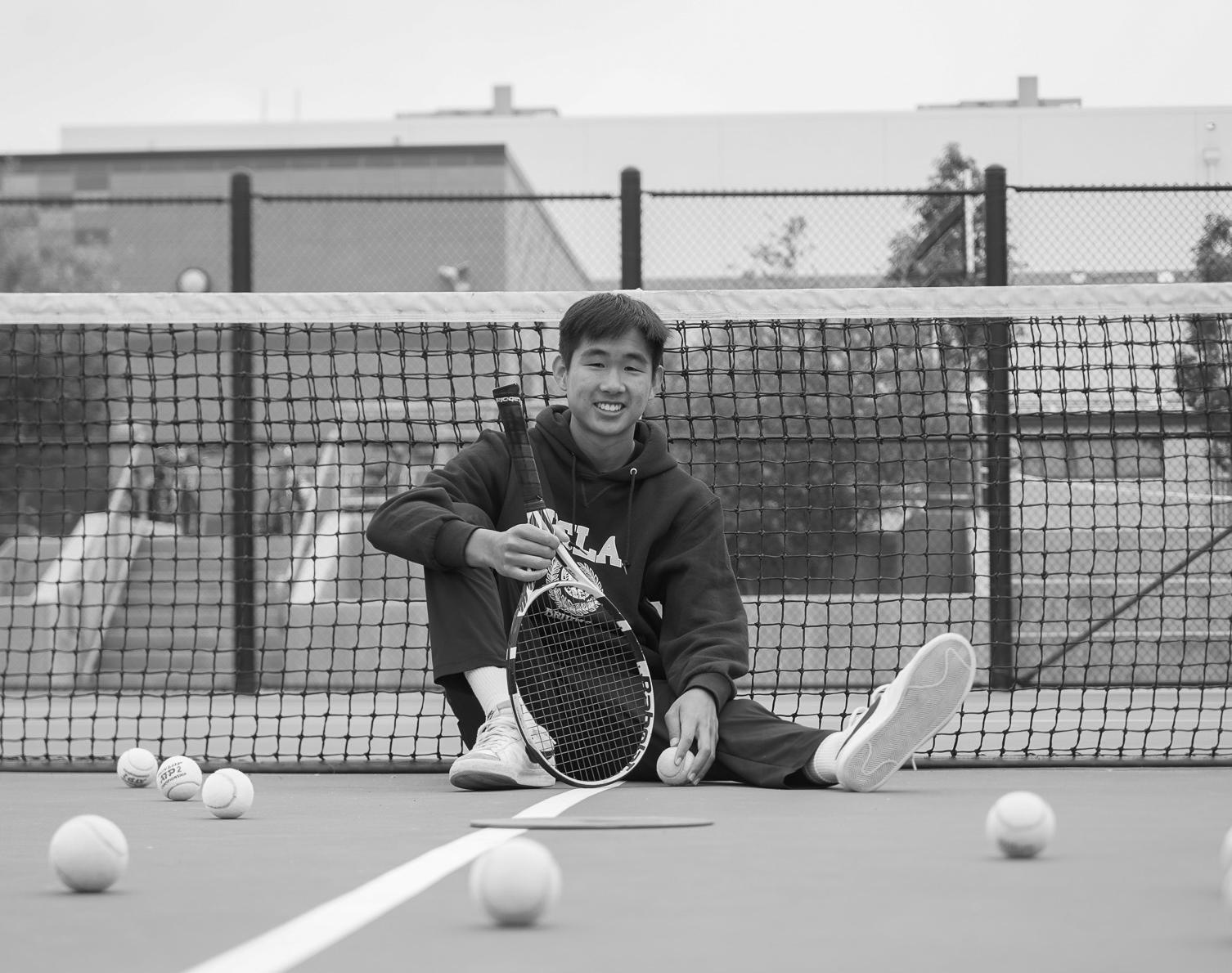
STORY ABIGAIL KIM
PHOTO SHIN-HYE (RACHEL) CHOI
Senior Christopher Wong has had a long history of playing tennis, as he started playing in elementary school and has continued the sport ever since. Wong is currently a co-captain of SPHS’s boys’ varsity tennis team and leads alongside junior co-captain Zachary Lee. He has been a captain since his junior year and plays doubles, which he has been doing since he started high school.
Wong has not always been as serious about the sport, as he played few to no tournaments before high school and played relatively inconsistently. He originally was motivated by his mom, who also played tennis, as she wanted him to pursue the sport similar to herself. He would occasionally play around South Pasadena, but
after making varsity his freshman year, Wong’s passion for tennis started to pick up. He began cross training and routinely attending practices. Now, he practices five days a week while also playing in matches during the boys’ tennis season, which runs in the spring.
“We usually have two or three matches a week,” Wong said. “[During] practices, sometimes we do drills, sometimes we play matches against each other, just so we get more experience in match play.”
One of the team’s highlights from the year includes beating San Marino High School twice, which is a feat that has not been achieved in over 30 years. Wong described it as one of their biggest accomplishments this season, and is extremely proud. Wong also aspires for the team to be able to re-qualify for CIF semifinals and hopefully continue to CIF finals. The boys’ varsity team qualified
for CIF semifinals last season during Wong’s junior year while he was a co-captain, which was the first time in school history they were able to do so. They qualified by just one point to make the quarterfinals in one of their biggest wins, and they qualified for the semi-finals by a margin of four points.
Qualification for the first round of CIF is determined by league standings. After league finals, the top three teams in the Rio Hondo League move on to the preliminary round. This season, the team is ranked second in league, and they will most likely be moving to CIF during the next couple of weeks. Advancing further in CIF is a team effort — every round SPHS plays another school, and only the winners move on. Wong hopes to be able to lead the team to the finals round.
“I hope to make CIF finals and win the whole thing. I think that’d be a really great accomplishment,” Wong said. “We made it further than we did last year. And honestly, I think the team is really strong this year. We have a good chance to do it, so I’m really hopeful that we’ll be able to make it that far.”
Wong has undergone injuries and describes them as some of his greatest setbacks in tennis. Although they have never been serious, his biggest injury was a back injury during last year’s CIF. He was able to overcome it smoothly, but it still was a huge obstacle, as it happened just as CIF hit.
“I think it was just due to playing a lot more than I was used to. So it was overuse, and eventually I just got hurt,” Wong said. “I eventually got around that and I played through it.”
This year was particularly unique for the team, as head Coach Krista Gale had to take a break from coaching. As a result, Wong stepped up to help out the team with their JV assistant coach.
“I had to…step up and take over some of [Gale’s] responsibilities…like keeping the team in order…but also helping out with behind the scenes stuff like working on jerseys,” Wong said.
Wong will be graduating this year, and although he will not be pursuing tennis collegiately, he hopes to continue playing as a hobby by doing intramurals or participating in club.
“I think the main thing that made me enjoy tennis so much is all the friends that I made,” Wong said. “Even though it’s a pretty individual sport, I met a lot of people [by] playing against them and being on the team with them, and I think that’s why I like sports so much.”
March Madness: judging a player by their cover
STORY CLAIRE MAO
ILLUSTRATION ISOLE KIM
The 2024 March Madness tournament has captivated audiences like never before and placed a spotlight on top league players. March Madness involves the NCAA, the National Collegiate Athletic Association, and features Division I men’s and women’s basketball championship competitions consisting of 68 college teams.
Millions started watching women’s basketball, and according to ESPN (an American owned cable sports company), the Women’s March Madness viewership surpassed the men’s games in popularity. Their final game between South Carolina’s Gamecocks and Iowa’s Hawkeyes averaged around 18.7 million views. Combining ESPN and ABC, the views reached 24 million. This surge in interest in women’s sports is unprecedented. This year’s March Madness included key players like Caitlin Clark of Iowa State and Angel Reese of LSU, both of whom attracted fans and media attention alike. However, increased viewership reveals a darker side of the sports fandom.
Angel Reese from the LSU Tiger team has received criticism, racial slurs, and even as far as death threats after her oncourt behavior at the NCAA Elite Eight game of March Madness. At the end of a round, Reese celebrated the LSU Tigers’ fourth-quarter lead by waving her hand in front of her face towards Clark, the guard of the Iowa Hawkeyes. The wave of the hand, along with tapping the ring finger, is an indicator of the phrase, “you can’t see me.” The phrase first began when John Cena waved his hand towards his opponent, implying that he was invisible and too fast, or good, for the opponent to see.
Reese’s clip of the gesture quickly went viral, and observers criticized her. The criticism partially emerged from Reese’s race. Previously, Clark has done the same gesture in an Elite Eight game against the Louisville team; however, she was praised for the gesture from John Cena himself.
There was no difference between the gestures performed by Reese, who is Black, and Clark, who is white, the only difference being their race. Reese’s similar display was met
with severe backlash, and the different reactions to the same gesture reveals the persistent bias in sports, whether it is race or on-court personality.
The intense judgment towards Reese highlights trouble when it comes to sports and media. Often, viewers take players’ on-court personality negatively and they are deeply influenced by stereotypes and biases. With continued prejudice towards players and their personality, the perception blurs the lines between professional persona and personal character.
It is important to realize that an on-court persona strives to boost confidence, drive engagement, and to waver the opposing team. These personas are used as tactical tools — however, when viewers fail to distinguish between personas and an individual’s “true-self,” they create unjust judgments on athletes. In the case of Reese, the player has to face both judgements based on racial discrimination and gender prejudices.
Women, in particular, receive more criticism compared to male players for their on-court personas. For male athletes, displays of confidence and assertiveness are frequently seen as the competitive spirit — often being praised for rallying their teammates. However, when female athletes express similar characteristics, the media criticizes them for being unsportsmanlike or overbearing.
Gender biases like these are not just restricted to the sports fandom — they are often shown in various fields such as business, politics, and entertainment. The media constantly labels assertive women as “too bossy” or even improper.
Addressing these biases is incredibly important, and the media plays a pivotal role in shaping narratives around female athletes. Online platforms significantly amplify harsh backlash, and there are dire consequences.
Continuous criticism may affect a player’s mental health and potentially risk their professional career. As tournaments continue, it is crucial for viewers to distinguish between an athlete’s professional façade and their personal character — which should not ever be muddled together.

TIGER APRIL 26, 2024
PAGE DESIGN SOLANA SINGER
15 SPORTS
SPORTS
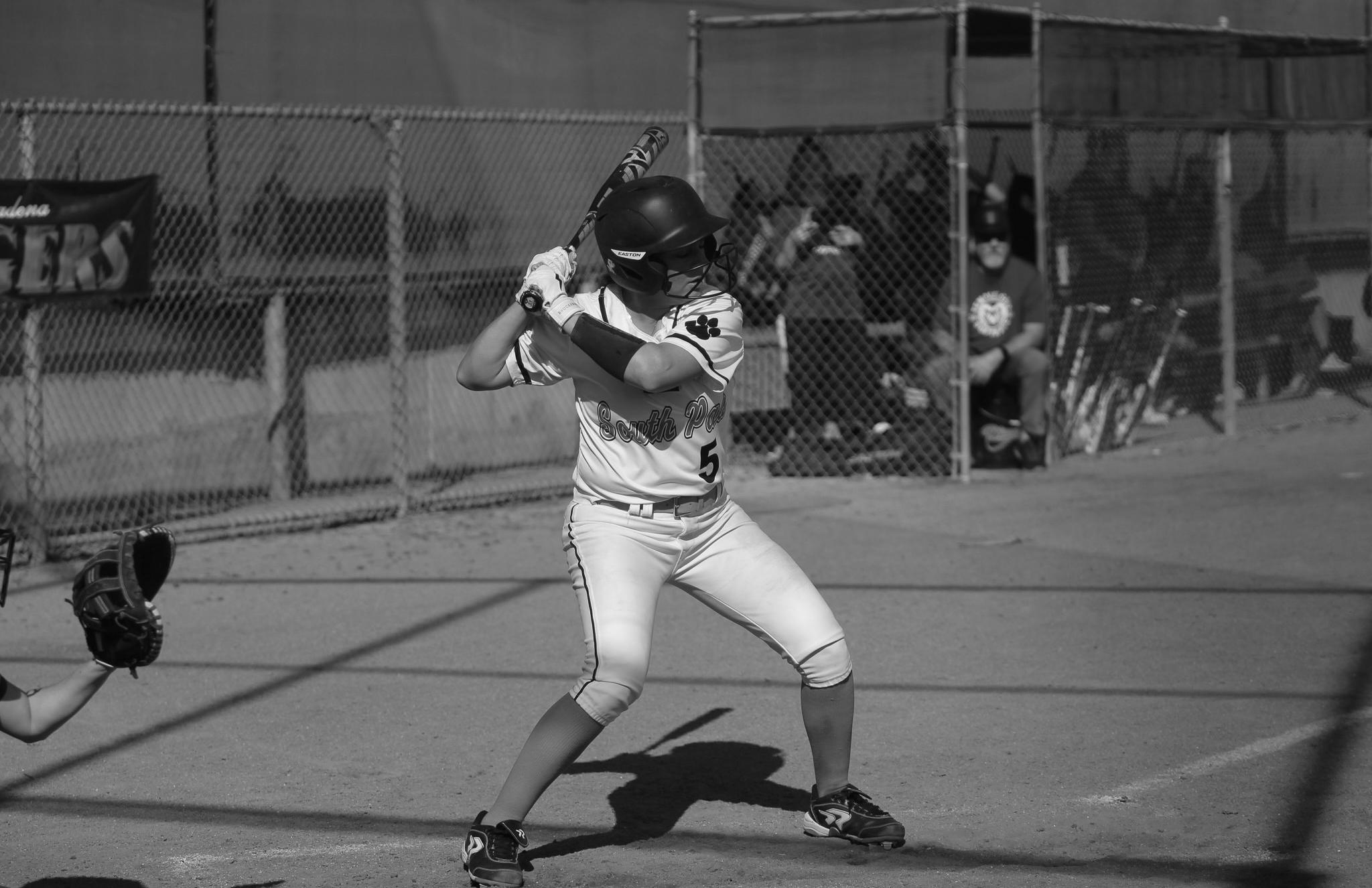
SPHS softball fails to catch up with La Cañada
The Tigers suffered a 9-2 loss in softball, but the team’s energetic atmosphere never lost its sparkle.
STORY CLAIRE MAO
PHOTO SUNHYE (SUNNY)
CHOI
The Tigers lost their home game to the La Cañada Spartans on Friday, April 19. The final score was 9-2.
La Cañada was first up at bat, and they faced off against junior Tiger pitcher Natalie Kan. With one La Cañada player on second base, Kan struck out a batter for the first of the Tiger’s outs. Now, the Tigers were at bat. The runner on second stole third, but Kan struck out the next two La Cañada players and closed the top of the first inning.
Kan and sophomore Lucia Atencio both struck out for the Tigers, and senior Leila Nolasco faced similar challenges when her hit was caught for the Tigers’ last out.
The Tigers made their first play of the second inning when they caught a grounder and threw the runner out. Again, a Spartan runner managed to get on base and make it to third. However, the Spartan was thrown out before La Cañada could score their first run.
Senior captain Danica Stirling was first up at bat for the Tigers in the second inning. Stirling accurately judged pitches and managed to walk to first after the fourth ball was called. Freshman Talula Bearden then had the first South Pasadena hit of the game and was able to secure a single, advancing junior Emma Becerra. Next up at bat was Becerra, whose hit allowed Stirling to move to third within striking distance of a run for the Tigers. Before Stirling could score, however, La Cañada got their third out and ended the inning.
Tiger players continued to strike out, and the Tigers had a hard time catching up with the Spartans. By the fifth inning, La Cañada had a seven run lead on the Tigers’
score of 0. During the fifth inning, Bearden nearly tagged out a runner after making a catch, but was just late in getting the runner out and the umpire called her safe. Once the game finished, the Tigers trailed behind La Cañada by seven runs.
“Our defense wasn’t on the sharper side…and that has kept us in the game. But today, we weren’t our cleanest and that definitely hurt us,” Stirling said. “We didn’t get as many hits as we wished…our biggest challenge [was] finding the gaps on the field, and making our defense a little cleaner would have helped a lot.”
The team practices every week and hopes to be more aggressive when batting in the next game.
“We don’t like losing…but it was a tough game. We played hard…and we’re gonna come back stronger for sure,” Stirling said.
South Pasadena may have lost the game, but the team did not lose its supportive atmosphere. As innings passed by, more and more cheers erupted from the Tigers as they batted.
“We were cheering the whole game,” Stirling said. “We were all excited to play today, [and] we had good energy. We were excited and we were cheering each other on, and that definitely helped us stay in the game.”
The team remains in high hopes and strives to beat any future opponents while cheering for the Tigers as a team together. The Tigers played their last game of the season on Friday, April 26 against the Monrovia Wildcats at home. At the conclusion of their game against the Spartans, the Tigers were ranked fourth in the Rio Hondo League.
Nak-nak! Who’s there?
ELLIE NAKAMURA
Karma fish
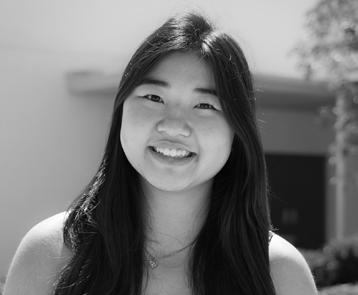
I’d like to think of myself as objectively good. Subjectively, I can’t control that, but from a moral standpoint, I’d like to think I was on the higher side of it. I thought I treated people well, from a moral standpoint. I considered myself conscious to a fault, at least when it came to seeing myself. It was almost like I was constantly afraid of disappointing people or failing their expectations that I couldn’t stand the thought of being anything but good.
Subjectively, I guess I’m not as good as I thought. I cannot fulfill the needs of all my friends if they don’t accept my flaws, if they allow themselves to be disappointed because I simply cannot live up to expectations. That’s supposed to be okay. I’m not supposed to be upset or sad when I lose said friends because I cannot correct my faults. I cannot stop mourning relationships based upon what I could’ve been. Every day, I tell myself that I’m better off without people who don’t accept my faults or accept that I cannot please everyone no matter how hard I try, but there’s the lingering thought that I am objectively bad. I have a lot of things to work on, definitely, but perhaps I’m not a good friend at all. Effort and intention can only get you so far. I miss the familiarity of never knowing whether I am wanted among my friends. In a sense, I felt more secure in insecurity than rejection entirely. I’m grasping onto connections that aren’t there.
But it’s awfully lonely being someone who cannot please everyone. The idea of everyone should lose its value because I cannot exist in a world where I please everyone — in a sense, I would cease to be myself. Why should I care about people who don’t accept me for who I am? Still, I always drift back to the possibility that I am, objectively, not good. How else could I have lost an entire group of friends in one fell swoop? How could my friendships fall apart at the assumption of my lunch company? One unintentional zucchini sandwich and suddenly I have lost all companionship on a daily basis.
Yet I do not feel alone — in fact, I feel closer and more aware of those who value me for me. I miss the idea of that friendship. It’s not that it was never there, but its loss isn’t about the relationship itself. I mourn the moments we shared, the sisterhood I could access daily, the expectations of support for each other but not the people truly. Maybe that’s the saddest part. It was never about the people, but rather what they represented. They were like family in the sense that I could feel happy but not secure. I could not communicate my needs and thus felt more alone surrounded by these people than now, sitting alone at Kaldi’s.
In retrospect, being unable to fulfill my friends’ needs didn’t make me a bad person. I failed to acknowledge my changes and let those who were affected go, for both their well being and mine. As my high school years come to an end, I cannot help but feel regretful that I didn’t seek out companionship to fill those empty spaces. I became too comfortable with my solitude, as loneliness was safer than constantly wondering when I was going to disappoint whoever I sought company from, that I forfeited the joy of my senior year. I’d like to forget this year, and move on to a future where, yes, I may be a different person, but that change is embraced. I have fervent hope that a more diverse environment may reveal my morality and ability to fulfill others’ needs, like a small fish in a big pond.
TIGER APRIL 26, 2024 BUT WAIT! INSTAGRAM @tigernewspaper X @SPHStiger FACEBOOK @tiger.newspaper There’s more... CHECK OUT MORE COVERAGE ON ONLINE tigernewspaper.com YOUTUBE @SPHSTigerNewspaper
PAGE DESIGN SOLANA SINGER
16

























 STORY SOLANA SINGER
STORY SOLANA SINGER

 STORY ELLIE NAKAMURA ILLUSTRATION HEEJOON (JOON) LEE
STORY ELLIE NAKAMURA ILLUSTRATION HEEJOON (JOON) LEE

 STORY CLEMENTINE EVANS PHOTOS SAMANTHA SHIROISHI
STORY CLEMENTINE EVANS PHOTOS SAMANTHA SHIROISHI









